Products
Proteins
- Whey Protein
- Protein Hydrolysate
- Brown Rice Protein
- Soy Protein Isolate
- Pea Protein Isolate
- Egg Albumen Protein
- Milk Proteins
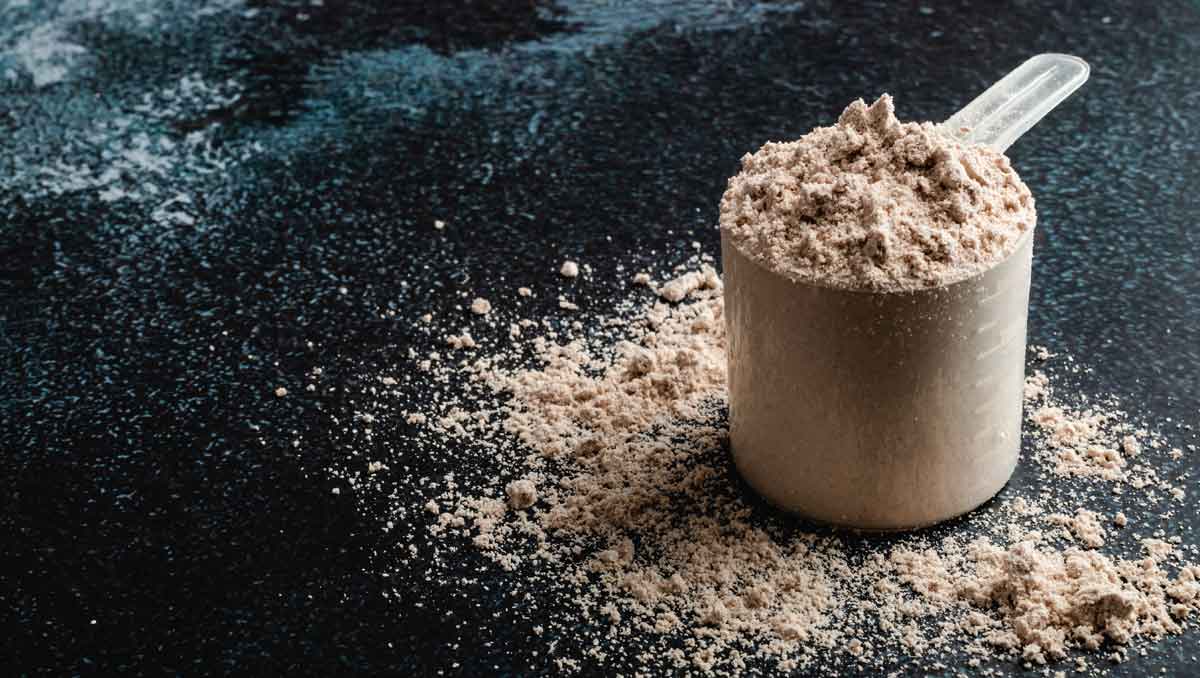
Whey Protein
Whey Protein is the protein from whey, the watery portion of milk that separates from the curds when making cheese. Whey protein is simply a concentrated form of protein derived from dairy. It is commonly used as a protein supplement.
There are several popular types of whey protein. Their main difference is in the way they have been processed.
- Concentrate: About 70-80% protein; contains some lactose (milk sugar) and fat and has the best flavor.
- Isolate: 90% protein, or higher; contains less lactose and fat and lacks a lot of the beneficial nutrients found in whey protein concentrate.
- Hydrolysate: Also known as hydrolyzed whey, this type has been pre-digested so that it gets absorbed faster. It causes a 28-43% greater spike in insulin levels than isolate.
Benefits
Whey protein might improve the nutrient content of the diet and also have effects on the immune system.
Whey Protein is commonly used for improving athletic performance and increasing strength. It is also used for asthma, diabetes, weight loss, and many other conditions.
The best-known use of whey protein supplements is for the purpose of increasing muscle mass and strength.
Whey protein is popular among athletes, bodybuilders, fitness models, as well as people looking to improve their performance in the gym.
The ways by which whey protein promotes muscle/strength gain include:
- Building blocks: It provides protein and amino acids, which serve as building blocks for increased muscle growth.
- Hormones: It increases the release of anabolic hormones that can stimulate muscle growth, such as insulin.
- Leucine: It's high in the amino acid leucine, which is known to stimulate muscle protein synthesis at the molecular and genetic level.
- Fast absorption: Whey protein is absorbed and utilized very quickly compared to other types of protein.
How Much Whey Protein Per Day?
Before you add a whey protein supplement to your diet, it's important to determine how much protein you actually need. This amount differs from person to person depending on your size, activity level, and goals.
The Dietary Reference Intake (DRI) for the average healthy person is 0.8 grams of protein per kilogram bodyweight. However, people who are active and/or working to build muscle often need more whey protein (or other protein sources). Eating protein-rich foods like lean meats, eggs, and fish may help your protein goals, but this can be difficult if your protein needs are high. Taking a protein powder like whey protein is a convenient and simple way to pack additional protein throughout the day. Finally, many people choose to incorporate whey protein powder into their diet because of how quickly it is absorbed.
How to Consume?
Mixing isolate protein with water will help achieve lean muscle mass and give better results in weight loss too. Consuming whey with milk is ideal for those who want to bulk up and gain muscle mass in the body. Additionally, it is quite helpful for lean built individuals and beginners who want to gain weight.
Conclusion:
Whey protein is an exceptionally healthy way to add more protein to your diet. It's a quality protein source that is absorbed and utilized efficiently by the human body.
This is particularly important for athletes, bodybuilders or people who need to gain muscle mass and strength while losing fat.
When it comes to muscle gain and fat loss, protein is the king of nutrients. Whey protein seems to be even better than other forms of quality protein.
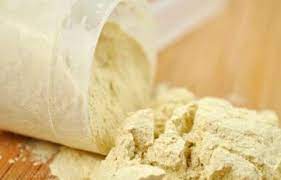
Protein Hydrolysate
Hydrolyzed protein is a solution derived from the hydrolysis of a protein into its component amino acids and peptides. While many means of achieving this exist, most common is prolonged heating with hydrochloric acid sometimes with an enzyme such as pancreatic protease to simulate the naturally occurring hydrolytic process.
Protein hydrolysates are essentially produced by enzymatic hydrolysis of whole protein sources by appropriate proteolytic enzymes under controlled conditions, followed by posthydrolysis processing to isolate desired and potent bioactive peptides from a complex mixture of active and inactive peptides.
Hydrolyzed protein powders contain "pre-digested proteins," so they're easier to absorb (bye, upset stomach) and may help speed up post-workout muscle recovery. Whether you're lifting heavy or HIIT-ing it hard, one of the best ways to help your body recover after a tough workout is to consume some protein.
Benefits
Protein hydrolysis is a useful route to the isolation of individual amino acids Examples include cystine from hydrolysis of hair, tryptophane from casein, histidine from red blood cells and arginine from gelatin.
Common hydrolyzed products used in food are hydrolyzed vegetable protein and yeast extract, which are used as flavor enhancers because the hydrolysis of the protein produces free glutamic acid. Some hydrolyzed beef protein powders are used for specialized diets.
Protein hydrolysis can be used to modify the allergenic properties of infant formula. Reducing the size of cow milk proteins in the formula makes it more suitable for consumption by babies suffering from milk protein intolerance.
Hydrolyzed protein is also used in certain specially formulated hypoallergenic pet foods, notably dog foods for dogs and puppies that suffer from allergies caused by certain protein types in standard commercial dog food brands. The protein contents of the foods are split into peptides which reduces the likelihood for an animal's immune system recognizing an allergic threat. Hydrolyzed protein diets for cats are often recommended for felines with food allergies and certain types of digestive issues.
Protein hydrolysates are widely used as food and feed additives, where they have a variety of protein property altering characteristics. Many types of proteins, including soy protein, gelatin, caseins, and whey proteins may be modified using proteases. Fish and meat hydrolysates are prepared using proteases, and proteases may also be used for meat tenderization.
How much protein hydrolysate per day?
My dissertation work revealed that people consuming 30 grams of hydrolysate twice per day significantly increased muscle mass and reduced body fat without significantly affecting total body weight
How to Consume?
Mixing hydrolysate protein powder with water will help achieve lean muscle mass and give better results in weight loss too. Consuming with milk is ideal for those who want to bulk up and gain muscle mass in the body. Additionally, it is quite helpful for lean built individuals and beginners who want to gain weight.
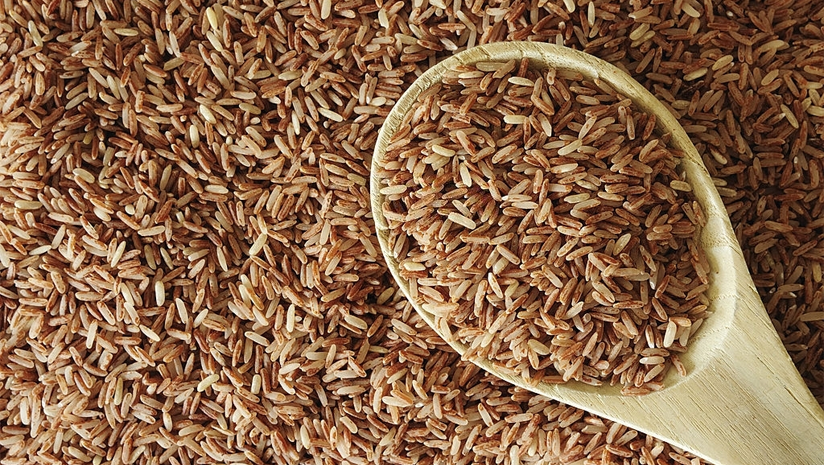
Brown Rice Protein
Brown rice protein is a protein supplement made from brown rice, which is later converted into powder form. By weight, it contains 78% protein, 36% essential amino acids, and 18% branched-chain amino acids. This protein is hypoallergenic and is an excellent supplement with many health benefits.
Brown rice is a whole grain rice with the inedible outer hull removed. This kind of rice sheds its outer hull or husk but the bran and germ layer remain on, constituting the brown or tan colour of rice. White rice is the same grain without the hull, the bran layer, and the cereal germ.
Benefits:
- Easily digested - Very often, people taking protein powders or on a high protein diet struggle with digestive upset. Rice protein powder, however, tends to be easier to digest and limit these problems.
- Improved taste - Many vegan proteins, like pea protein, have strong or distinct flavors that make it difficult for some users. Just like the grain from whence it is taken, though, rice protein powder has a very subtle taste.
- Hypo-allergenic - Unlike protein powders that are derived from milk, soy, or wheat, there are no concerns with allergies when it comes to rice protein powders.
- Easy to cook with - Thanks to the light taste, referenced above, rice protein powder can easily be used in various recipes to improve their nutritional profile. Heat also does not destroy the protein in rice powder, so the supplement will be unaffected by cooking or baking.
- Adaptable - Along the same lines, rice protein powder can be used in a wide variety of ways. As mentioned, it can be used in a number of recipes to improve a meal or thrown into any number of shake combinations for a quick snack. The same cannot be said for all protein powders - some of which adversely affect the taste or texture of certain dishes.
- Vegan - Of course, rice protein powder is a completely vegan protein. This means that it is totally free of animal products and by-products.
- Fast absorption - Depending on the source, protein powders are digested and metabolized at various rates one they're in the body. Rice protein powder, however, gets to work quickly making it ideal for post-workout recovery.
- Excellent amino acid profile - Although it is not a complete protein (meaning that some amino acids are missing) rice protein powder does contain high amounts of many essential amino acids. The absent aminos can be gained throughout the day by means of a well-rounded diet or by mixing rice protein powder with another complementary vegan protein source.
- Improves body composition - High protein diets, regardless of the protein source, have been shown to help reduce body fat and increase muscle mass - when combined with proper exercise. In part, this is due to protein's ability to make you feel fuller faster and for longer periods of time while playing a key role in the creation and maintenance of muscle fibers.
- Normalize blood sugar - Protein also helps to reduce the severity of insulin spikes and the resultant blood sugar crash that sometimes comes along with high-carb meals. When eaten with carbohydrates, protein slows down the absorption of these foods and can prevent feelings of exhaustion or mental fog that sometimes results.
Is brown rice a good source of protein?
One serving of brown rice (around 185g cooked weight) contains 7.4g of protein. This can contribute towards your total protein goal within a meal. For a complete balanced meal, it is recommended that all the food groups are included - protein, fats, and carbohydrates.
What rice is highest in protein?
Wild rice is a high-protein rice bursting with nutritional value. It tops our list with 6.5 grams of protein and 166 calories per 1-cup serving.
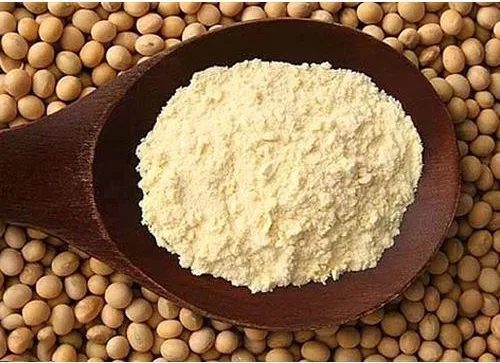
Soy Protein Isolate
Soy protein isolate is a protein that comes from soybeans. It's cheaper than some protein options and easy to add to your diet. Soy protein isolate is a concentrated form of plant-based protein originating from soybeans. Like soy, it contains all nine essential amino acids, though its protein content is significantly higher at about 90 percent protein.
You can use soy protein to help you lose weight, boost energy, or build muscle. Soy protein isolate may also manage your hormone balance and lower your risk of breast cancer, heart disease, and osteoporosis.
Protein is important for your overall health and boosts development. Soy protein is 90% protein. Other plant proteins don't have the complete nutritional value that soy does. You may need to add vitamins and minerals to those plant proteins that can already be found in soy protein.
Studies have shown that soy protein can also help your gut barrier, making it easier for your body nutrients. The researchers say dietary soy protein helps your immune defense, too.
Benefits of Soy Protein Isolate
Soy is a complete protein with all nine essential amino acids, more than other plant proteins. It has lots of health benefits:
Cholesterol. Soy protein is good for lowering cholesterol levels, low-density lipoproteins (LDL or "bad” cholesterol), and triglycerides. There's no cholesterol in soy protein isolate.
Protein. If you're on a vegetarian or vegan diet, soy protein is a healthy way to reach your protein goals.
Cardiovascular health. Eating soy protein isolate instead of animal proteins can help improve your overall heart health. Soy protein isolate supplements are meant to make you feel full.
Gastrointestinal health. Soy protein has fiber, which is great for your gastrointestinal system. Adding fiber to your diet keeps your stomach and lower intestines healthy.
Vitamins and minerals. Soy foods are high in vitamins and minerals including B vitamins, zinc, and iron. Some supplements have calcium and vitamin D in them, too. There are also plenty of antioxidants in soy.
Isoflavones.
Some studies have linked isoflavones, chemicals that can be found in soy protein, to prevention of bone loss that may happen after menopause and with certain cancers.
Where Is Soy Protein Isolate Found?
Soy protein is a common isolate that's easy to dissolve. It's used as a supplement or as an ingredient in food. Supplemental protein powder is often mixed with vitamins, minerals, and flavoring.
You may find soy protein isolate in things like soy flour or grits that are used for breakfast cereal, processed meats, and baby foods.
Can Soy Protein be taken daily?
Numerous clinical studies have found that daily consumption of up to 50 grams of soy protein is not only safe, but may also be effective in improving risk factors for chronic disease such as some types of cancer, diabetes, and cardiovascular disease.
How much Soy protein can be consumed in a Day?
Nutritional Aspect
That's equivalent to approximately 84-119 grams for men and 66-94 grams for women daily. Soy protein contains all amino acids essential to human nutrition with less saturated fat and no cholesterol.
Summary
Soy isolates are mainly used to improve the texture of meat products, but are also used to increase protein content, to enhance moisture retention, and as an emulsifier. Pure soy protein isolate is used mainly by the food industry.
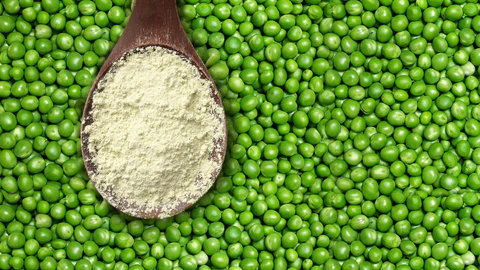
Pea Protein Isolate
The Plant-based pea protein powders give you the nutrition you need without the side effects of animal-based protein sources. It is one of the most Non-allergenic of all protein powders. The powder is produced by grinding peas and removing the starch and fiber. Peas are naturally rich in protein. Pea protein powders provide the powerful benefits you need to become healthy overall. It is a high-quality, easily digested protein source made from yellow peas. It contains a high amount of iron, arginine, and branched-chain amino acids and offers benefits like improved muscle growth, feelings of fullness, and heart health.
Nutritional benefits of pea protein
Pea protein powder is made by isolating the protein from ground yellow peas, forming a beige powder. Nutrition facts can vary between brands. Based on dry-milling and wet-milling technologies the pea protein powder can be obtained, which will have protein content ranging from 48% to 90%. It offers a variety of nutritional benefits.
- High-Quality Protein Source: Pea protein powder contains all nine amino acids essential for your body as they cannot be produced by its own and must get from food. However, it's relatively low in methionine. You can compensate for this by including other methionine-rich foods, like eggs, fish, poultry, beef, pork, or brown rice in your diet. It's also a great source of branched-chain amino acids
- Rich in Iron: Pea protein powders are also rich in iron. Most products contain around 5-7.5 mg of iron per serving roughly 28-42% of the reference daily intake (RDI) for premenopausal women and 62-94% of the RDI for men and postmenopausal women.
Benefits of pea protein
- Easy Digestion and Fast Absorption of Fiber
Being a legume, a pure pea contains high levels of fiber and starch making it hard to digest. Pea powder loses most of its fiber and starch when processed. Pea powder becomes easier to digest. The proteins in this legume are 95-98% digestible, allowing for maximized absorption. This means the body gets access to them quickly and can put them to use right away where they are needed most. - Muscle-Building and Repair
The amino acids in peas are perfect for repairing and rebuilding muscle. After the workout the muscle tissue is torn and needs an immediate supply of the right amino acids to repair these tears and layer extra muscle fiber over the top. The highly digestible and absorbable nature of pea protein means you can take it just before or just after a workout and get amino acids to the rescue quickly. On the other hand, taking pea protein powder without working out won't make much of a difference. To effectively build muscle, consistent exercise must be done together with proper nutrition. - Promotes Appetite Control and Helps with Weight LossPeas help regulate appetite and aid in weight loss. It is a low- calorie food without containing the unhealthy fats found in many meat and animal proteins. High protein-containing foods keep you full for a longer time. This means you won't be craving that extra donut in between meals. This leads to gradual weight loss.
- Good for the Kidney and Heart
The protein from peas, mainly yellow peas, has been shown to lower cholesterol and blood pressure while being gentle on the kidneys. It may actually prevent kidney problems. - Supports optimal health and well being
Moreover, pea protein is good for your weight, it's a great addition to a plant-based diet. Studies show that plant-based diets are cost-effective, low-risk interventions that may lower body mass index, blood pressure, and cholesterol levels.
Supplements and dosage of pea protein
- Supplements
There are hundreds of Pea protein supplements on the market in powders; however, there is differing advice on when and how to take Pea Protein supplements. Always check with a dietitian or a healthcare professional before using any Pea Protein supplement. There are different formulation and dosage forms of Pea Protein powders, liquids, etc (Nature's Velvet Pea Protein Isolate Powder is one of the examples). - Dosage
A proper dose of pea protein depends on several factors such as the user's age, health, and several other conditions. A 30-gram, two-scoop serving of pure pea protein powder has 26 grams of protein, according to one manufacturer. It's low in carbs. It's also a good source of iron, with 20 percent of the daily value. Consider that natural products are not always necessarily safe and dosages can be important. Read the relevant directions on product labels and consult your pharmacist or physician or other healthcare professional before using it.
Summary
Pea protein powder is a high-quality, easily digested protein extracted from yellow peas.
It contains a high amount of iron, arginine, and branched-chain amino acids and offers benefits like improved muscle growth, feelings of fullness, and heart health. As it's naturally vegan, gluten-free, dairy-free, and hypoallergenic it can be added to most of the diets. Pea powder becomes easier to digest. Pea protein helps regulate appetite and aid in weight loss. Peas are perfect for repairing and rebuilding muscle Pea protein powder is a great option if you're looking to add more protein to your diet. Pea protein powder is normally well tolerated with few side effects. However, it can contain a relatively high amount of sodium.
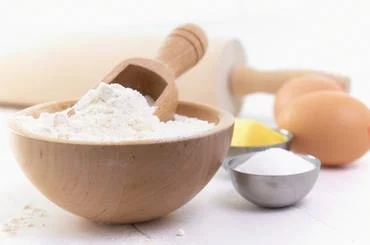
Egg Albumen Protein
Protein powders are concentrated sources of protein from animal or plant foods. The main types of these supplements are whey, casein, soy, rice, hemp, and pea protein.
Egg white protein powder is a newer form of protein powder and is just how it sounds - a powdered form of egg white.
Egg whites are the white portion of an egg that surrounds the yolk, consisting of ~90% water and ~10% protein. In fact, the egg white contains almost 70% of all the protein found in an egg.
On paper, egg white protein powders are very similar to the other popular protein powders, containing a high amount of protein (~80%) with minimal fat and carbohydrates. This similarity is good as these protein powders have been shown to improve muscle mass, strength, and overall performance.
Our Egg White Albumen Powder is a premium quality free-range egg white powder derived from free range chicken eggs. It can be used for shakes, smoothies, cakes, brownies, sponges, muffins, omelets, protein bars and is excellent for making icing.
Egg protein powder can help as you look to shred fat, build lean muscle mass, and absorb more nutrients and vitamins. The egg white is the best part of the egg in terms of its impact on nutritional growth.
And in addition to protein, the egg white contains nutrients like magnesium, riboflavin, potassium, sodium, and niacin and minerals like zinc, phosphorous, copper, and calcium. One of the great benefits of egg albumin is that, unlike many other foods, it loses little nutritional value when cooked.
Albumen powder is a ready and easy to use ingredient which results in less time and resources. Albumen powder has great whipping properties, comparable to a fresh liquid egg. Large volume of foam resulted makes it the pivot ingredient in bakery and pastry production especially when it comes to nougat, marshmallow etc.
When to take Egg White Powder?
For best results, we recommend adding 1 large scoop (30g) to 150-250ml of water or milk in a shaker 30 minutes before and/or after your workout. Alternatively, just have any time of day to increase your daily protein intake.
Benefits:
- Egg White Protein Is A Very Good Quality Protein Source
Not only does egg white protein powder contain a very high amount of protein, ~25 grams of protein per 30 gram serving, but it is also very high-quality.
In fact, that could even be an understatement, as out of all whole foods, eggs have the highest "protein digestibility-corrected amino acid score” which measures a protein's quality and digestibility.
Eggs are also high in the essential amino acids that need to be obtained through the diet and are well-known to be responsible for initiating protein synthesis. It is only second to whey protein powder in terms of its leucine content (2682mg per 30 gram serving) - the amino acid that has the largest role in muscle health. - Egg White Protein May Improve Body Composition and Performance
As expected from the nutritional profile, egg white protein powder is able to have similar effects on body composition and performance compared to more traditional protein powders.
The studies on egg white protein powder is limited, however so far it has been demonstrated to significantly increase strength in resistance training populations.
Animal studies have also shown an effect for this supplement to reduce body fat mass by accelerating β-oxidation in the liver. - It's A Dairy-Free Alternative To Whey
Many people are intolerant to dairy products as they are unable to digest lactose, thus causing many gastrointestinal issues such as bloating and stomach cramps.
Egg white protein powder therefore offers a convenient and high-quality alternative to more traditional dairy proteins such as whey and casein. - It Avoids the Additional Calories from Whole Eggs
Although only eating egg whites misses out on most of the vitamin and mineral content that is concentrated in the yolk, the yolk is also the component where most of the calories, fat, and cholesterol are found.
For people wanting to lose weight, it may therefore be more suitable to remove the yolk portion of an egg.
Considering that egg white protein powder is just a more concentrated source of egg whites in their natural form it can also be an alternative option, especially for athlete who have an increased dietary demand for protein. For example, it would take 4 whole eggs to match the amount of protein in just 1 serving of egg white protein powder (but with an extra 20 grams of fat!). - Egg White Protein Is Low in Saturated Fat and Cholesterol
Many animal sources of protein, including eggs, are naturally consumed alongside a high intake of saturated fat and cholesterol.
The issues with high saturated fat intakes are still being heavily debated in the scientific community. Some evidence has suggested that saturated fat has the ability to raise LDL levels in the blood by reducing the activity of LDL-cholesterol, as well as increasing the rate of LDL oxidation which causes chronic inflammation. It is for this reason that saturated fat is linked to causing cardiovascular diseases, as LDL is a substance that attaches to the lining of arteries and results in plaque formation on arterial walls.
A similar debate is seen with dietary cholesterol and whether this impacts blood cholesterol levels. Limited evidence links dietary cholesterol to elevated blood cholesterol levels, however there is considerable counter evidence to suggest otherwise. The reason dietary cholesterol may have this effect is by facilitating the build-up of fatty deposits on blood vessel walls by increasing the uptake of oxidized LDL-cholesterol particles. There are also biological "hyper-responders” that have genetic predispositions to high cholesterol - called the ApoE4 gene.
For eggs specifically, scientific meta-analyses are also currently undecided on whether eggs are harmful or not. Some studies highlight the potential harm of eggs. whilst others find no link between egg intake and health risks.
Either way, egg white protein powder is an option for people who are wary of the potential risks with these nutrients as it is very low in fat (<1 gram per 30 gram serving) and is completely free from cholesterol.
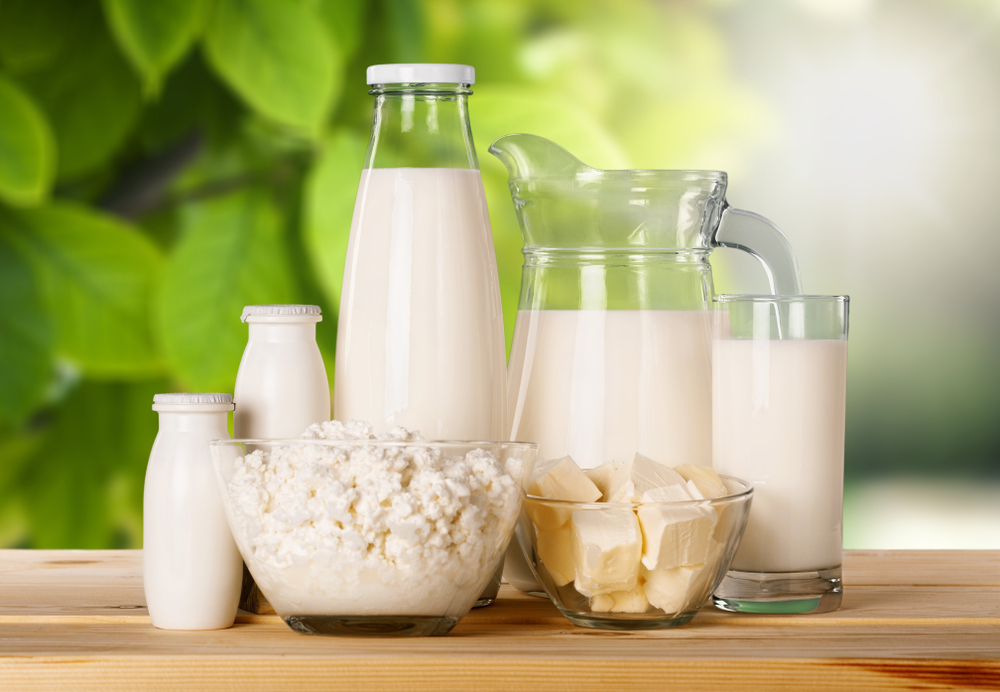
Milk Proteins
Milk Protein Concentrate
Milk protein concentrate is any type of concentrated milk product that contains 40-90% milk protein.It contains a protein content of more than 40% (w/w), which can be further increased up to 90%. MPC is primarily produced by partial removal of water, minerals, and lactose from skim milk through filtration technologies such as ultrafiltration coupled with or without diafiltration and followed by spray drying.
What are Milk protein concentrate used for?
Applications of MPC include: use in nutritional beverages, nutritional and dietary products, aged care products, infant formulas, protein bars, yogurts, recombined cheeses, cultured products, frozen desserts, bakery and confection applications
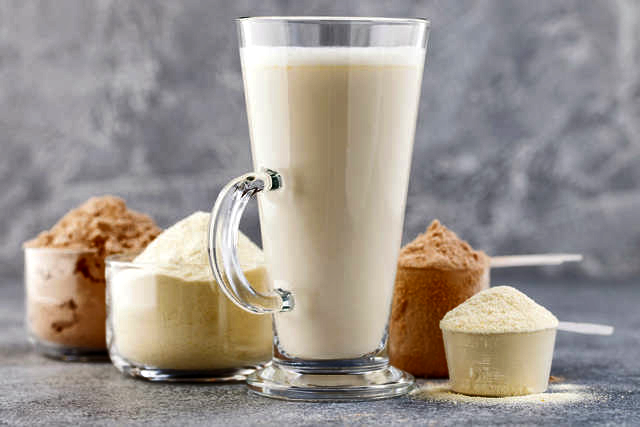
Benefits of Milk protein concentrate:
Due to its high protein content, milk protein isolate may offer some health benefits, such as aiding muscle growth, promoting fat loss, and strengthening bones. It also has a high casein content, which may help combat the breakdown of muscles — especially overnight.
- Calories: 100
- Protein: 23 grams
- Fat: 0 grams
- Carbs: 0 grams
- Calcium: 20% of the Daily Value (DV)
As you can see, MPI is super high in protein and low in fat and carbs. It's also a great source of calcium. You need this mineral for lots of things, including muscle function and cellular communication. It's is also super important for bone health.
How to use milk protein isolate
You can use MPI the same way you would other types of protein powders. Most peeps add it to shakes and smoothies, but you can also try it in yogurt, chia pudding, oats, soups, and a bunch of other recipes.MPI isn't as popular as other types of protein like whey protein, though. You may not be able to find it in your local health food or grocery store. You can find MPI online if it's not available in a store near you.
The takeaway
- MPI is a type of milk-derived protein that contains both casein and whey.
- It can help support muscle growth, increase your protein intake, and keep you feeling satiated between meals.
- If you're looking for a dairy-based protein powder to help boost your protein consumption, give MPI a try.
- MPI might be hard to find in your local store, but it's available online.
Cow Colostrum Powder
Bovine colostrum is a milky fluid that comes from the udder of cows the first few days after giving birth, before true milk appears. This fluid contains proteins called antibodies. These antibodies may fight bacteria and viruses that cause diseases. Antibody levels in bovine colostrum can be 100 times higher than levels in regular cow's milk. Researchers have created a special type of bovine colostrum called "hyperimmune bovine colostrum." This special colostrum is produced by cows that have received vaccinations against specific disease-causing organisms and is high is specific kinds of antibodies. Bovine colostrum is most commonly used for diarrhea and other infections.
Why is Bovine Colostrum good for you?
The estimated 25% of good fat in bovine colostrum provides oleic acid, which is beneficial for cardiovascular health. Vitamins and minerals. Vitamins A, B, D, and E are found in much higher concentrations in bovine colostrum than in mature cow's milk.

Benefits:
Bovine Colostrum is used in the prevention against diarrhea, for improved immune system function, the treatment of AIDS-related gastrointestinal diseases, and to improve gut health. Taking bovine colostrum by mouth may prevent upper airway infections in people that exercise. It also might reduce symptoms of airway infections that do occur. Diarrhea in people with HIV/AIDS. Taking bovine colostrum may help reduce diarrhea in people with HIV.
How do you use Bovine Colostrum?
Colostrum is a rich source of anti-aging compounds, including growth factors and antioxidants, that can help support optimal skin health and reduce the signs of aging. Our colostrum supplement can be used in cosmetic products, including creams, lotions, and serums, to support skin health and improve overall appearance.
Highly Nutritious:
Bovine colostrum is extremely nutritious and contains more nutrients than regular milk. In particular, it's higher in protein, fat, carbs, magnesium, B vitamins, and vitamins A, C, and E than cow's milk.
While colostrum is rich in macronutrients, vitamins, and minerals, its claimed health benefits are mostly linked to specific protein compounds, which include:
- Lactoferrin. Lactoferrin is a protein involved in your body's immune response to infections, including those caused by bacteria and viruses.
- Growth factors. Growth factors are hormones that stimulate growth. Bovine colostrum is especially high in two protein-based hormones.
- Antibodies. Antibodies are proteins, also known as immunoglobulins, used by your immune system to fight bacteria and viruses. Bovine colostrum is rich in the antibodies IgA, IgG, and IgM
Since bovine colostrum is loaded with nutrients that fight disease and promote growth, it may be able to boost immunity, treat infections, and offer more related benefits in humans throughout life.
Summary
Bovine colostrum contains macronutrients, vitamins, and minerals. It's especially high in protein compounds that regulate immune responses and promote growth, including lactoferrin, growth factors, and antibodies.
Sodium Caseinate
It is a compound derived from casein, a protein present in the milk of mammals. Casein is the dominant protein in cow's milk and responsible for its opaque, white appearance. It's an integral component of many milk-based products like ice cream and cheese. Casein proteins can be separated from milk and used independently as a supplement or additive to thicken, texturize, and stabilize various food products.
How it's made
The terms casein and sodium caseinate are often used interchangeably, but they differ slightly on a chemical level. Sodium caseinate is a compound that forms when casein proteins are chemically extracted from skim milk. First, the solid casein-containing curds are separated from the whey, which is the liquid part of milk. This can be done by adding specialized enzymes or an acidic substance — like lemon juice or vinegar — to the milk. Once the curds have been separated from the whey, they're treated with a basic substance called sodium hydroxide before being dried into a powder.
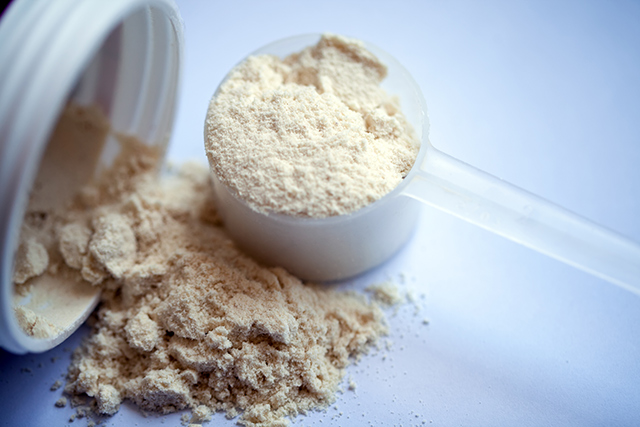
The resulting sodium caseinate powder can then be used in a variety of foods, including:
- Protein Powder
- Coffee Creamer
- Cheese
- Ice Cream
- Cheese-Flavored Snacks
- Margarine
- Cereal Bars
- Processed Meats
- Chocolate
- Bread
There are several types of caseinates, but sodium caseinate is usually preferred because it's the most water-soluble, meaning that it readily mixes with other substances.
Uses of Sodium Caseinate:
- Protein supplement - This sodium caseinate powder can be used as a protein powder because it provides a rich source of high-quality protein. It contains 90 per cent protein. This essential nutrient is required for the body for building and repairing muscle tissues, improving bone health and boosting metabolism. As sodium caseinate is high in protein, it would make an excellent protein supplement choice among athletes and people involved in strength training.
- Food additive - In the food industry, sodium caseinate is used as a food additive. It can be used to change the texture and stabilize many kinds of food products such as ice cream, cheese, coffee creamer, cereal bars, chocolate, bread, margarine, cheese-flavored snacks and processed meats.
Sodium Caseinate used in:
- Cheese products
- Coffee whiteners and creamers
- Confectionery
- Cultured milk products, yoghurt etc.
- High fat powders, shortenings and spreads
- Ice cream and frozen desserts
- Infant foods
- Instant breakfasts and beverages
- Meat products
- Nutritional food bars
- Pasta
- Pharmaceuticals
- Soups and gravies
- Sports drinks
- Whipped toppings
Ways to Add Sodium Caseinate In Your Diet:
- Mix sodium caseinate in your beverages and foods.
- Add sodium caseinate powder to your smoothies.
- You can add sodium caseinate in your oatmeal and eat it for breakfast.
- You can add it in your yogurt as well and have it as a snack.
Benefits of Using Sodium Caseinate:
- Since casein is the source of all the essential amino acids it provides high nutritional value.
- Since casein is the source of all the essential amino acids it provides high nutritional value.
- Easy to consume as it is soluble in water and a free-flowing powder.
- Can be used as foaming agent in food.
- Used for natural texture enhancement.
- Acts as stability agent in case of creams and also used as coffee whitener.
- Used in wines due to the coagulant property.
Collagen Peptide

Fish Collagen Peptide
Fish collagen peptide, also known as marine collagen peptide, is a health ingredient made from fish and is made up of mostly type I collagen. Fish collagen peptide is characterized by their specific amino acid composition, with a high concentration of glycine and proline.
Like other sources of collagen, marine collagen may help delay some signs of aging, like wrinkles, joint issues, and weakness. Besides the anti-aging benefits, fish collagen also provides an alternative to people who have issues about using other forms of collagen.
Health Benefits of Marine Collagen:
- It Helps Improve Skin Elasticity and Hydration
Think of a collagen supplement as an ingestible addition to your skincare routine. It can act as an antioxidant to help counteract the damaging effects of free radicals.
A 2019 review of 11 studies saw an improvement in skin elasticity and hydration in women who took 3-10 grams of collagen per day for an average of 69 days.
"The beauty and skin health benefits of collagen are undeniable—which is why at The Beauty Chef we have always promoted a diet rich in gut and skin-loving amino acids—as lack of collagen contributes to fine lines, wrinkles and reduced skin hydration,” says The Beauty Chef founder Carla Oates. "This is why it's such an essential nutrient to consume regularly to help fight the effects of ageing and support plump, firm skin.” - It Supports Gut Health
Marine or fish collagen supplements can support gut health, thanks to the ingredient's amino acid content.
These amino acids—including proline, glycine and glutamine—help to strengthen and rebuild the delicate lining of our digestive tract. We know that foods rich in amino acids can also have an anti-inflammatory effect on the body. It's beneficial to include an abundance of amino-acid rich foods—like marine collagen, bone broth, animal protein, eggs and dairy—in our diet regularly. - It Supports Joint and Bone Health
Collagen is essential for maintaining the integrity of your cartilage and bone strength. This means that as our body's natural collagen levels start to decline, we can become more susceptible to joint pain and low bone density.
Research has shown that taking a collagen supplement can help support joint and bone health. One 2019 review of five studies found that participants with osteoarthritis who took 10 grams of collagen per day for 24 weeks saw an improvement in joint pain and stiffness. Similarly, a 2018 study of 66 women who took collagen daily for 12 months found that the supplement led to an increase of up to 7% in their bone density. - It Promotes Stronger, Healthier Hair
Did you know that your hair is mostly composed of the protein keratin?
As mentioned earlier, collagen is a source of amino acids, including proline. As it turns out, proline is also the main component of keratin—this means that if your hair isn't as healthy as it could be, consuming a diet rich in proline could provide your body with the essentials to promote stronger hair. - It Encourages Lean Muscle Growth
Collagen is an important component of our body's muscle mass—in fact, up to 10% of muscle tissue is composed of collagen.
If you're interested in growing stronger and increasing your muscle mass, research suggests that supplementing your diet with collagen protein could help. A 2015 study found that taking collagen daily could stimulate muscle growth after exercise. Eating a balanced diet filled with protein-rich foods is especially important for maintaining muscle tissue as we get older.
How Effective is Fish Collagen?
Hydrolysed fish collagen is absorbed up to 1.5 times more efficiently in the body and has a higher bioavailability than bovine or porcine collagens. Since it is absorbed more efficiently and enters the bloodstream more quickly, it is considered the best source of collagen for medicinal purposes.
What Type Of collagen comes from Fish?
Fish collagen proteins are usually found in the skin and scales and are a source of type I and type II collagen. Bovine collagen comes from the bones and hides of cows and is a source of type I and type III collagen.
What form Does Collagen Peptide comes in?
It has to be broken down into smaller peptides or amino acids. Oral collagen supplements come in the form of pills and powders. They usually contain two or three amino acids. They are sold as collagen peptides or hydrolyzed collagen.
How is Fish Collagen Produced?
A collagen is extracted and produced from a raw fish skin through the steps: a salt admixing step for admixing a salt (e.g. NaCl, KCl or the like) with a raw fish skin so as to allow non-collagen substances or portions (including fats and other tissue portions than a collagen portion) to be removed from the fish skin
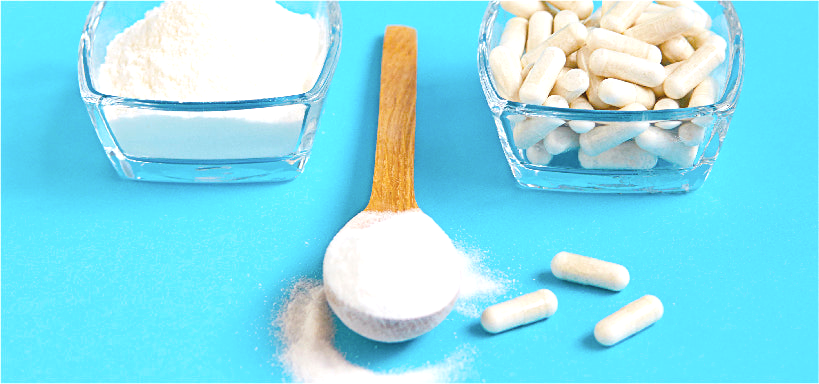
Bovine Collagen Peptide
Also known as hydrolysed Bovine Collagen peptides, a Bovine peptide is a type of collagen that is broken down to make it easier for your body to absorb. Bovine collagen is a form of this protein that's mainly derived from cows.
It's associated with several health benefits, including arthritis relief, improved skin health, and bone loss prevention.
Collagen is naturally produced by your body, but you can also obtain it from foods and supplements.
Most supplements are derived from a variety of animal and plant sources, the most common of which are bovine animals, pigs, and marine species like fish, jellyfish, and sponges. Less common sources include genetically modified yeast and bacteria.
Bovine species include yak, antelope, bison, water buffalo, and cows — but bovine collagen comes primarily from cows.
To make it, cow bones or other cattle byproducts are boiled in water. After the collagen is extracted, it's dried and powdered to form a supplement.
What is bovine collagen peptide made from?
Bovine collagen is a common collagen source that is derived from animals in the bovine family, most commonly cows. It's typically made from farming by-products such as bone, cartilage and hide. Bovine collagen is rich in Types I and III collagen, and most closely resembles the collagen that's present in the human body.
Benefits
- Helps Treat Osteoarthritis
Research continues on collagen's value in treating bone and joint diseases like arthritis, but there is growing evidence that collagen hydrolysate might be able to help patients with osteoarthritis (OA).
When you have OA, it causes joint cartilage to become stiff and lose its flexibility. This decline in joint health makes a sufferer even more susceptible to joint damage.
Over time, this degenerative joint disease can cause cartilage to wear away, leading to pain, and eventually the bones could even rub against each other.
Multiple studies have shown collagen hydrolysate to be safe and to provide improvement in some measures of pain and function in men and women with OA or other arthritic conditions. Since cartilage is made up of collagen, it makes sense that supplementing with this building block could help the strength and framework of the cartilage itself.
Collagen hydrolysate (which is the same thing as hydrolyzed collagen) is of interest as a potential medical treatment for osteoporosis as well. Some researchers believe its high level of safety makes it an excellent long-term treatment for osteoarthritis and osteoporosis, which are both chronic disorders.
If you suffer from either condition, you should include bovine collagen as part of your arthritis diet and/or osteoporosis diet treatment plan. - Can Improve Gut Health
Collagen contains vital amino acids, which have been shown to be beneficial to the entire gastrointestinal system. That includes the stomach as well as the intestines.
Studies show that one of these amino acids, glycine, actually improves digestion by increasing gastric or stomach acid. This acid is an essential digestive liquid produced in the stomach.
Through the use of collagen to increase low stomach acid levels, you're able to better digest your food, which can prevent and help troubling heartburn and gastroesophageal reflux disease. It can also help leaky gut syndrome and inflammatory bowel disease, which also tend to involve low stomach acid.
Research indicates that glycine is also helpful with detoxification, which is excellent for your digestive health as well as your overall health. Glycine is actually one of the precursor amino acids to glutathione, a major antioxidant and detoxifying agent in the body. - Builds Muscle and Repairs Tissue
Beef collagen is a structural protein found in cows so it's inherently a super-high protein source. More specifically, beef collagen contains types I and III collagen, which are the best types of collagen to consume when it comes to workout and muscle recovery.
Collagen types I and III specifically support the tendons and ligaments that you use every time you exercise. By consuming collagen pre- and post-workout, you can help your body recover better and faster from physical exertion of all kinds.
Bovine pericardium also is used extensively in medical applications, including bio-prosthetic heart valves, dural closure, bone and dental membranes, and surgical buttressing. Because it's mostly collagen, bovine pericardium is both strong and elastic.
In fact, lyophilized bovine collagen matrix has even been used in postoperative wound healing. One pilot study found that "type I bovine collagen matrix provided a safe, readily available alternative to traditional methods of second intention healing."
However, another study concluded that using porcine collagen (from a pig) does not appear as safe, according to the research. - Promotes Deeper Sleep
The most abundant amino acid in collagen is glycine, an immunonutrient that supports healthy inflammation response and also promotes deeper, more restorative sleep. Human and animal studies have shown that glycine affects neurotransmitters in a way that promotes better quality sleep, making bovine collagen a natural sleep aid.
n animals, findings show that oral administration of glycine increases extracellular serotonin release in the prefrontal cortex. The results of three human trials demonstrate that glycine improves sleep quality in a subjective and objective manner with no serious adverse effects. - Improves Skin Quality
When taken internally, collagen can really improve the overall health of your skin, making for an excellent natural skin care product. It helps form elastin and other compounds within skin that are responsible for maintaining skin's youthful tone, texture and appearance.
Collagen is accredited with helping reduce the visible signs of wrinkles, decreasing puffiness and fighting various other signs of aging.
Many people report a decrease in cellulite when consuming foods and supplements containing collagen, since cellulite forms due to a lack of connective tissue, allowing skin to lose its firm tone.
A double-blind, placebo-controlled study investigating the anti-aging properties of collagen conducted by the University of Kiel's Department of Dermatology found that 2.5—5 grams of collagen hydrolysate used among women aged 35-55 once daily for eight weeks supports skin elasticity, skin moisture, transepidermal water loss (dryness) and skin roughness.
At the end of only four weeks, those using collagen showed a statistically significant improvement in comparison to those using a placebo with regard to skin moisture and skin evaporation, plus noticeable decreases in signs of accelerated aging. - Works as a Topical Treatment
Bovine collagen is also typically used to help with several common issues. One study suggests that a topical ointment and bovine type I collagen spray are effective in the treatment of acute anal fissures (or small tears) in children.
For itchiness near the anus (anal pruritus), a cream with 5 percent bovine collagen applied two or more times daily can offer relief. Beef collagen might also help reduce symptoms of hemorrhoids when applied externally on the rectum.
A facial cream that includes bovine collagen can also help improve acne. Apply the cream twice a day to clean skin.
Are your gums sore after having a tooth pulled? It sounds strange, but people have found relief from beef collagen.
Simply combine a powdered bovine collagen with salt water to form a paste, and pack it into the dry socket after a tooth extraction.
Types and uses of bovine collagen supplements.
The two main types of bovine collagen supplements are gelatin and hydrolyzed collagen, which differ primarily in how they're used. Gelatin is cooked collagen. It typically comes in powdered form and is largely used in desserts, as it causes liquids to gel.

What form should I take collagen?
But to ensure your body gets all the collagen it can from supplements, opt for collagen peptides or hydrolyzed collagen. This alternative includes fragments of animal-derived collagen. Breaking down collagen makes it easier for the body to absorb in its entirety than collagen taken as a complete protein.
How much Collagen should you take per day?
There are many types of collagen supplements, and how much you should take depends on the type. Your doctor can advise you of the appropriate amount for you. That said, if you eat a healthy diet, you may not need them.

Undenatured Chicken Collagen Type II
The undenatured form of type II collagen (UC-II), a nutritional supplement, is derived from chicken sternum cartilage and is a powdered, glycosylated, and shelf-resistant component
What is undenatured type 2 collagen used for?
UNDENATURED TYPE II COLLAGEN is used to strengthen bones, promote bone growth, enhance wound repair, healing and provide lubrication to the joints. UNDENATURED TYPE II COLLAGEN is also used in the treatment of various bone disorders such as osteoarthritis.
What are the natural sources of undenatured type II collagen?
Type 2 collagen supplements are mainly made from chicken cartilage, although some are also made from pork and shark cartilage. Chicken bone broth is the best whole food source you can find.
What are the benefits of undenatured collagen?
What are type II collagen's main benefits? The primary benefit of undenatured CII appears to be improvement in joint pain, mainly in the context of osteoarthritis and rheumatoid arthritis. Hydrolyzed CII (also known as CII hydrolysate) may improve skin health/appearance and reduce joint pain. Further, UNDENATURED TYPE II COLLAGEN helps in the formation of healthy, new skin and bone cells. Hence, UNDENATURED TYPE II COLLAGEN is useful in healing muscle and joint pain, in addition to finding use in bone diseases such as osteoarthritis and in improving the overall quality of the skin and the body.
Note that Type-II Collagen is also known as:
- CII
- Hydrolyzed collagen
- Solubilized collagen
- Gelatin
- Collagen
- Shark gelatin
Type-II Collagen should not be confused with:
- Colostrum (different protein with a similar name)
Dosage:
The dose of CII taken depends on whether it is denatured (hydrolyzed) or undenatured. For skin and joint health, the daily dose of hydrolyzed collagen is around 10 grams per day. For treatment of osteoarthritis and rheumatoid arthritis, undenatured collagen is taken at a much lower daily dose (often around 40 milligrams), and while it doesn't need to be taken at any particular time of the day, it may be ideal to take it on an empty stomach before breakfast.
CII should not be taken as a protein supplement because it has a lackluster amino acid profile.
Yeast
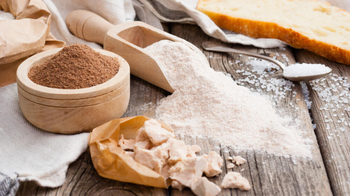
Yeasts are eukaryotic, single-celled microorganisms classified as members of the fungus kingdom. The first yeast originated hundreds of millions of years ago, and at least 1,500 species are currently recognized. They are estimated to constitute 1% of all described fungal species.
What is yeast called?
Saccharomyces cerevisiae, also known as brewer's or baker's yeast, has been a key ingredient in baking, winemaking, and brewing for millennia. It derives its name from the Latinized Greek meaning “sugar fungus” because it converts sugars and starches into alcohol and carbon dioxide during the fermentation process.
What is yeast made of?
"Yeast is a fungus that grows as a single cell, rather than as a mushroom," says Laura Rusche, associate professor of biological sciences. Though each yeast organism is made up of just one cell, yeast cells live together in multicellular colonies
Where is yeast used for?
Yeasts have two main uses in food production: baking and making alcoholic beverages. They have been used in this way since ancient times – there is evidence that ancient Egyptians used yeast in breadmaking, and we have been making fermented drinks like beer and wine for millennia.
Types Of Yeast:
- Yeast - Extract
- Medicinal Yeast
- Dried Yeast
- Brewer Yeast
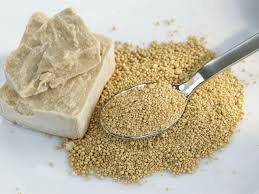
Yeast Extract
Yeast extract is a food flavoring made from the same yeast used to make bread and beer. It's also added to some foods like soy sauce and cheese for a savory flavor. The taste they create is sometimes referred to as "umami." Yeast extract is also found in canned soups and stews, frozen dinners, and salty snacks.
Yeast Extract Powder can be used in nutrients, drinks, foodstuffs, and flavoring such as seasoning packs of instant noodles, instant soup, chicken powder, cookies, soy sauce, bulked food, cooking food, and bread. It contains large amounts of amino acids that help in fermentation and microbial growth.
What is yeast extract powder made of?
Yeast extract is a product prepared mainly from waste brewer's yeast, which is rich in nucleotides, proteins, amino acids, sugars and a variety of trace elements, and has the advantages of low production cost and abundant supply of raw material.
What is yeast powder called?
For baking purposes, it's usually sold as instant or active dry yeast — a light brown powder composed of a yeast called Saccharomyces cerevisiae. Dry yeast activates in the presence of water and sugar as it begins to eat and digest the sugar. This produces carbon dioxide bubbles that get trapped in dense dough.
How much yeast extract to use?
How much yeast extract is used in foods? As yeast extract has an aromatic taste of its own, it is used only in small quantities - just like other seasoning ingredients. On average, the concentration of yeast extract in dishes is 1%.
Uses of yeast extract
From stews, to rich sauces and marinated meat, savoury meals are very popular. Yeast extract is a highly versatile ingredient that gives them a savoury flavour, and its taste qualities make it a particularly common ingredient in soups, sauces and ready meals, as well as snacks and meat dishes.
It closely resembles how herbs are used to flavour dishes, in terms of the amount used and its role in the overall recipe - and just like herbs and spices, yeast extract makes food even more delicious. Its aromatic taste perfectly complements and enriches foodstuffs. The total content of yeast extract in prepared foodstuffs is usually very low. The concentration of yeast extract is commonly less than one per cent.
Although the taste of yeast extract may closely resemble meat stock – as meat broth has a very similar amino acid profile to yeast extract - it isn't just totally natural and rich in proteins - it is also totally free of any animal-derived ingredients. This makes it the perfect ingredient for vegetarian and vegan cuisine. Yeast extract is used in the manufacturing of many vegetarian foodstuffs, as it gives these a savoury flavour
Additionally, yeast extract is particularly popular as a main ingredient in different vegetarian spreads that typically contain salt, plant extracts and spices.
Yeast extract gives low-salt dishes a depth of taste, and its savoury note also means that you don't have to reach for the salt shaker as often. Yeast extract can thus contribute to a salt-reduced diet.
In general, the way in which the ingredients in a food product combine and taste is essential for its success. This is another reason why yeast extract plays such a vital role in food manufacturing. It perfectly complements the taste of many food products and dishes, while adding the finishing touch to them in a totally natural way.
Benefits:
Yeast extract is very high in B vitamins, so it's a cheap source of these vitamins. This is good news for pregnant women or people with malabsorption conditions that cause them to need more B vitamins. If you have a food allergy or sensitivity, you certainly want to be careful about what you eat.
What is yeast powder used for?
Yeast is another leavening agent commonly found in baked goods, but it's a whole different animal than baking soda and baking powder. It's comprised of single-celled organisms that munch on sugars and produce carbon dioxide in return, which makes dough rise.
Is yeast extract good for digestion?
Hydrolysed yeast is also a product with high palatability and is a source of various B-vitamins and minerals. B-vitamins play an important role in supporting the nervous system, helping with stress management, aiding digestion and keeping coat, skin, eyes and liver healthy.
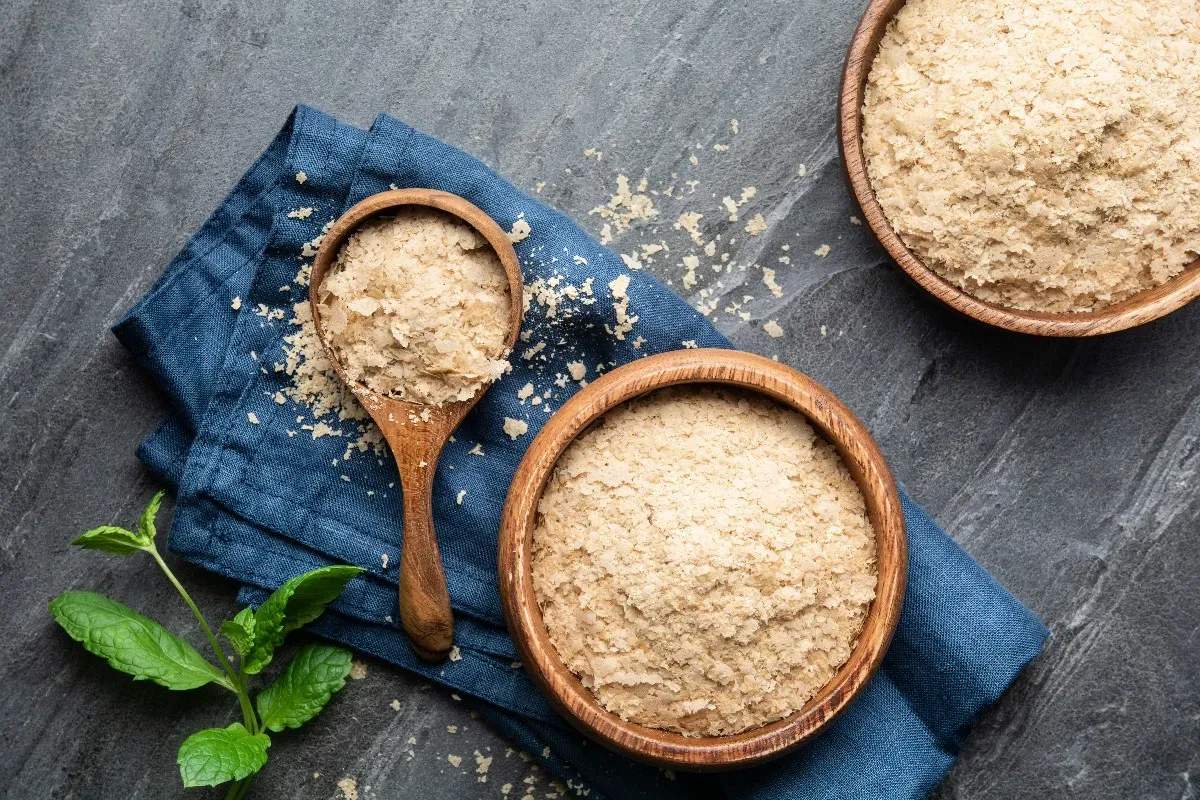
Medicinal Yeast
Nutritional yeast (Medicinal Yeast) is an inactivated version of the yeast you'd use to make bread or beer. It has a savory or umami flavor, and may help lower cholesterol, boost your immune health, and more.
Nutritional yeast, also called “nooch,” is a popular food product often used in vegan cooking. This powdered yeast gets its name from the nutrients it contains, including protein and a wide array of vitamins, minerals, and antioxidants. Studies show that nutritional yeast offers several potential health benefits, ranging from lower cholesterol to protection from cellular damage that leads to disease.
Nutritional yeast is a dairy-free and usually gluten-free way to give a savory, nutty flavor to dishes. People can use nutritional yeast to add vitamins, minerals, and protein to their diet.
Yeast has played an important role in the human diet for thousands of years. This fungus is a vital ingredient in bread, beer, and a range of other foods. In recent years, many people have started consuming a specific type of yeast called nutritional yeast. Due to its nutritional content, yeast in this form may increase a person's energy, support their immune system, and offer additional health benefits. In this article, learn about the benefits of nutritional yeast and how to incorporate it into a healthful diet.
It comes from a species of yeast known as Saccharomyces cerevisiae. There is another form of this yeast species, which is called brewer's yeast. Although people sometimes use the terms interchangeably, it is essential to note that nutritional yeast is not the same as brewer's yeast. Manufacturers can grow nutritional yeast on a variety of sources, including blackstrap molasses, whey, and sugar beets. It is similar to the yeast that people use in baking, but it undergoes a heating and drying process that renders it inactive.
Nutritional yeast is the cheesy-tasting cousin to brewer's and baker's yeast that has gained popularity in recent years alongside the rising interest in plant-based diets. It is rich in nutrients often lacking from vegetarian and vegan diets. It's also free of gluten, soy, and sugar, making it a great dietary addition for people with food sensitivities. However, research shows that its nutritional content can benefit any diet. These golden flakes are made with yeast similar to the strain used in brewing and baking, but it's deactivated in the final product. While nutritional yeast is rich in nutrients on its own, most varieties sold today are fortified with even more vitamins. You can find it at health stores and most supermarkets.
Yeast has played an important role in the human diet for thousands of years. This fungus is a vital ingredient in bread, beer, and a range of other foods. In recent years, many people have started consuming a specific type of yeast called nutritional yeast. Due to its nutritional content, yeast in this form may increase a person's energy, support their immune system, and offer additional health benefits. In this article, learn about the benefits of nutritional yeast and how to incorporate it into a healthful diet.It comes from a species of yeast known as Saccharomyces cerevisiae. There is another form of this yeast species, which is called brewer's yeast. Although people sometimes use the terms interchangeably, it is essential to note that nutritional yeast is not the same as brewer's yeast.
Manufacturers can grow nutritional yeast on a variety of sources, including blackstrap molasses, whey, and sugar beets. It is similar to the yeast that people use in baking, but it undergoes a heating and drying process that renders it inactive. Nutritional yeast is the cheesy-tasting cousin to brewer's and baker's yeast that has gained popularity in recent years alongside the rising interest in plant-based diets. It is rich in nutrients often lacking from vegetarian and vegan diets. It's also free of gluten, soy, and sugar, making it a great dietary addition for people with food sensitivities. However, research shows that its nutritional content can benefit any diet. These golden flakes are made with yeast similar to the strain used in brewing and baking, but it's deactivated in the final product. While nutritional yeast is rich in nutrients on its own, most varieties sold today are fortified with even more vitamins. You can find it at health stores and most supermarkets
Due to its cheesy, nutty flavor, nutritional yeast can be added to just about all your meals and snacks for extra protein, vitamins, minerals, and antioxidants.
Nutrition Information
A 2 tablespoon serving of nutritional yeast contains:
- Calories: 50
- Protein: 8 grams
- Fat: 1 gram
- Carbohydrates: 5 grams
- Fiber: 4 grams
- Sugar: 0 grams
Nutritional yeast is a good source of:
- Thiamine (B1)
- Riboflavin (B2)
- Pyridoxine (B6)
- Potassium
- Zinc
Benefits
Nutritional yeast is an excellent source of vitamins, minerals, and high-quality protein. Typically, one-quarter of a cup of nutritional yeast containsTrusted Source:
- 60 calories
- 8 grams (g) of protein
- 3 g of fiber
- 11.85 milligrams (mg) of thiamine, or vitamin B-1
- 9.70 mg of riboflavin, or vitamin B-2
- 5.90 mg of vitamin B-6
- 17.60 micrograms (mcg) of vitamin B-12
1. Boosting energy
While some manufacturers fortify nutritional yeast with vitamin B-12, not all of them do, so it is best to check the label. Vitamin B-12 may help boost energy, as a deficiency of this vitamin can lead toTrusted Source weakness and fatigue. Nutritional yeast can be particularly helpful for vegetarians and vegans if it has added vitamin B-12, as this vitamin mostly occurs in animal products. Adults need about 2.4 mcgTrusted Source of vitamin B-12 per day. Just one-quarter of a cup of nutritional yeast provides more than seven times this amount.
2. Supporting the immune system
ResearchTrusted Source has shown that S. cerevisiae, the strain of yeast in nutritional yeast, can support the immune system and reduce inflammation resulting from bacterial infection. It may also be helpful in treating diarrhea.
3. Promoting skin, hair, and nail health
Some research suggests that nutritional yeast can combat brittle nails and hair loss. It may also help reduce acne and improve other common skin problems, particularly in adolescence.
4. Improving glucose sensitivity
While some people believe that nutritional yeast improves glucose sensitivity in people with type 2 diabetes, studies have yet to prove this. However, some research on chromium-enriched yeast, which is usually brewer's yeast, found that this type of yeast could lower fasting blood glucose levels and cholesterol in an animal model.
5. Supporting a healthy pregnancy
Nutritional yeast can also support a healthy pregnancy. The United States Preventive Services Task Force recommend that all women who are planning a pregnancy take 400–800 mcg of folic acid a day to prevent congenital abnormalities and support the growth of the fetus. Manufacturers frequently fortify nutritional yeast with folic acid, which can make it a useful supplement for pregnant women. Some brands of nutritional yeast may contain more than a standard serving of folic acid though, so individuals should consult a doctor before using it as a supplement.
What is the medical use of yeast?
Yeast may help treat eczema, gout, infectious diarrhea, and some heart problems. It may help lower cholesterol and boost the immune system. It may also improve physical and mental health.

Dried Yeast (Active & Inactive)
Dry yeast is used to create various baked goods and enhances the overall texture, rise and flavor. There are many different forms of dry yeast. However, two of the most common types found on grocery store shelves are active dry yeast and instant dry yeast. "Active" describes any dry yeast that needs to be activated prior to use, while "instant dry yeast" describes any dry yeast that's ready for use the instant you open the package.
What is inactive dried yeast?
Inactivated yeast is an all-natural ingredient that reduces mix times and creates a more extensible dough with improved pan flow. It consists of yeast cells that are no longer living or active so they cannot produce any of the effects of live yeast, such as fermentation.
What are the benefits of inactive dry yeast?
Nutritional yeast is an inactivated version of the yeast you'd use to make bread or beer. It has a savory or umami flavor, and may help lower cholesterol, boost your immune health, and more. Nutritional yeast, also called “nooch,” is a popular food product often used in vegan cooking. Dry yeast comes in two forms: active and instant. "Active" describes any dry yeast that needs to be activated prior to use, while "instant dry yeast" describes any dry yeast that's ready for use the instant you open the package.
Is dried yeast active or instant?
In fact, they can be used interchangeably in most recipes. They're both commercial products made from drying fresh yeast into granules. Active dry yeast simply works a little more slowly than instant yeast. This is why in many recipes which call for active dry yeast, you'll see instructions for proofing included.
Other Benefits:
1. Refresh Your Skin
The purifying qualities of yeast make it an ideal face mask. The B Vitamins refresh and tone the skin, the antioxidants and amino acids restore skins youthful glow, vitamins PP,N and E are essential for skins nutrition and the minerals actively nourish . To make a yeast face mask just mix a sachet of yeast with warm water till it forms a thick paste. Leave to stand for 30 minutes before applying to your face. Leave for 20 minutes before washing off using warm water.
Please note: As with all beauty products we recommend doing a patch test 24 hours before use.
2. Give Your Hair Shine
To produce long and luxurious hair our bodies need a good supply of vitamin B8, and yeast is full of it. By simply creating a hair mask by mixing half a sachet of yeast in warm water, massaging it into damp hair and leaving it for 30 minutes before washing off you will give your hair a much needed boost.
Please note: As with all beauty products we recommend doing a patch test 24 hours before use.
3. Slug Control
Do you despair at slugs munching their way through your garden? Yeast slug traps are the earth friendly solution to removing these little blighters without using toxic chemicals. Simply fill a jar with a mixture of dried yeast, salt, sugar and warm water and bury into the soil at an angle. The slugs are attracted to the fermenting mixture and can easily make their way into the open mouth and down to the solution. Empty and refill every 2 to 3 days.
4. Good Bug Food
A simple mixture of yeast, honey and water in dishes around your garden can provide much needed protein rich food for insects such as ladybirds and bees to help them pollinate and fight garden pests.
5. Compost Accelerator
Due to the organisms in yeast a mixture of brewer's yeast, water and sugar added to a compost pile speeds up and fuels the decomposition of the organic materials. A warning though, the more active the organisms the warmer they make the compost. If the compost is above 160° the organisms begin to die out so always ensure the compost is cool before adding the yeast solution. With all these handy uses, this versatile ingredient proves itself a true essential for every household.
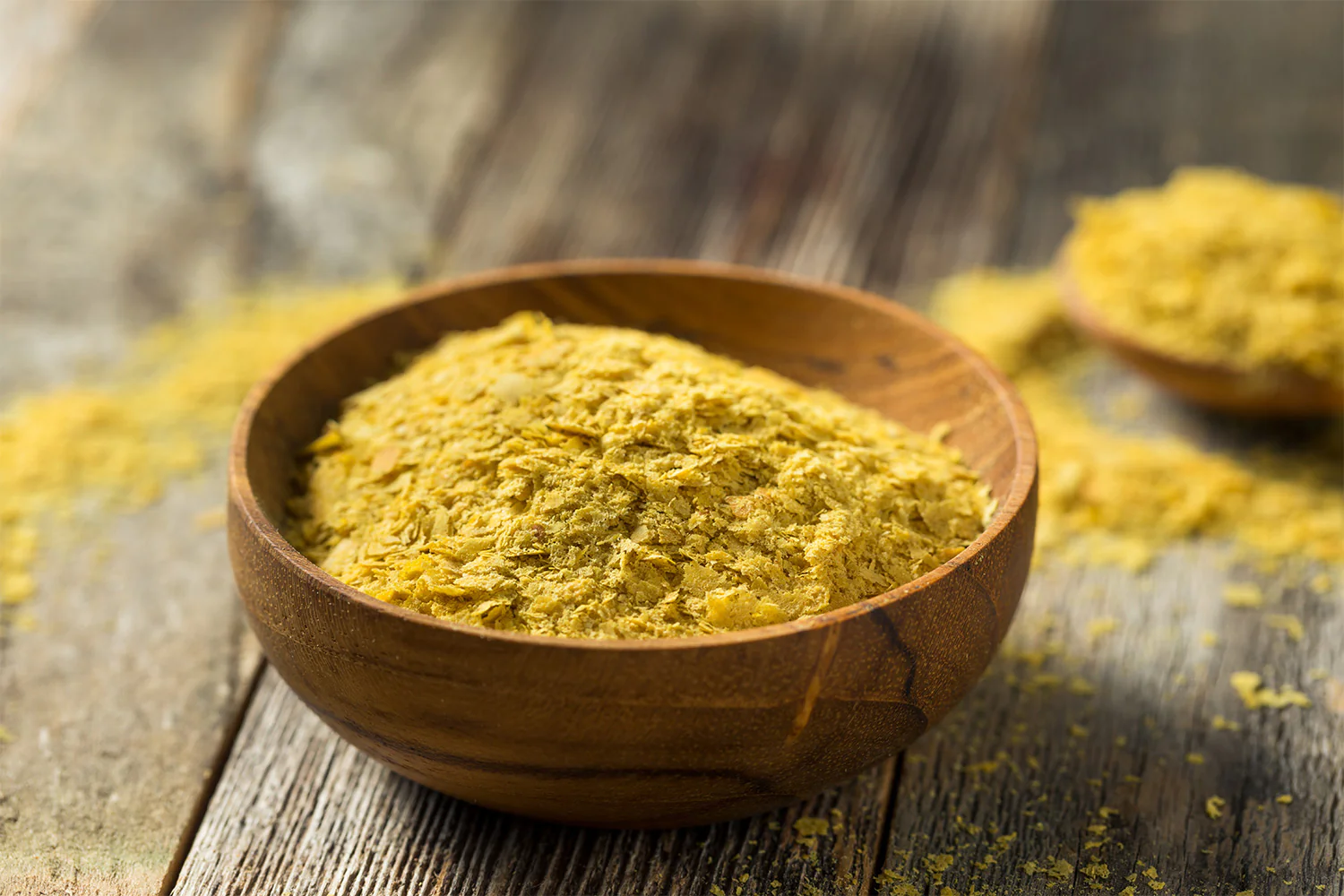
Brewer Yeast
Brewer's yeast is made from a one-celled fungus called Saccharomyces cerevisiae and is used to make beer. It has been grown and used as a nutritional supplement for years. Brewer's yeast is an ingredient used in the production of beer and bread. It is made from Saccharomyces cerevisiae, a one-celled fungus. Brewer's yeast has a bitter taste. Brewer's yeast is also used as a nutritional supplement. It's a rich source of chromium, which may help your body maintain normal blood sugar levels. It's also a source of B vitamins.
Note: Debittered brewer's yeast is a newer, more processed version of brewer's yeast. The "debittering" process removes much of the chromium in the yeast, so if you're looking for a good dietary source of chromium, check whether the brewer's yeast you buy is debittered. Brewer's yeast is considered a probiotic and is used to aid digestion.
Benefits:
General
The B-complex vitamins in brewer's yeast include B1 (thiamine), B2 (riboflavin), B3 (niacin), B5 (pantothenic acid), B6 (pyridoxine), B9 (folic acid), and H or B7 (biotin). These vitamins help break down carbohydrates, fats, and proteins, which provide the body with energy. They also support the nervous system, help maintain the muscles used for digestion, and keep skin, hair, eyes, mouth, and liver healthy. Brewer's yeast does not contain vitamin B12, an essential vitamin found in meat and dairy products.
Diabetes
Some studies suggest that chromium supplements may help people with diabetes control blood sugar levels. People with diabetes either do not produce enough insulin -- a hormone needed to change sugar, starches and other food into energy -- or cannot use the insulin that their bodies make. Chromium may lower blood sugar levels as well, improving glucose tolerance and reducing the amount of insulin needed. Because brewer's yeast is a rich source of chromium, scientists think it may help treat high blood sugar.
High Cholesterol
A few studies suggest that brewer's yeast may help lower LDL ("bad") cholesterol levels in the blood and raise HDL ("good") cholesterol levels. Researchers aren't sure whether that is due to the chromium in brewer's yeast or another substance. Not all studies have found positive results.
Weight Loss
Although some studies suggest that chromium may help reduce body fat, the amount of fat lost is small compared to what can be lost with exercise and a well-balanced diet. Brewer's yeast is also used as a protein supplement and energy booster. So it may help maintain a healthy weight.
Other Uses
At least one study has found that brewer's yeast may improve acne. Another linked it to a reduced risk of a second skin cancer. One large, preliminary study found that taking a specific kind brewer's yeast product (EpiCor) may help prevent colds and flu.
Available Forms
Brewer's yeast is available in powder, flakes, tablet, and liquid forms.
How to Take It
Pediatric
Brewer's yeast is not recommended for use in children, because it hasn't been studied.
Adult
1 to 2 per day; may be added to food or dissolved in juice or water.
Precautions
Supplements may have side effects or interact with medications. You should take them only under the supervision of your doctor. Side effects from brewer's yeast are generally mild and may include gas. People who have frequent yeast infections or who are allergic to yeast should avoid brewer's yeast. People with diabetes should talk to their doctors before taking brewer's yeast because it could interact with medications for diabetes and cause low blood sugar. People with Crohn's disease should also talk to their doctors before taking brewer's yeast.
Peptone
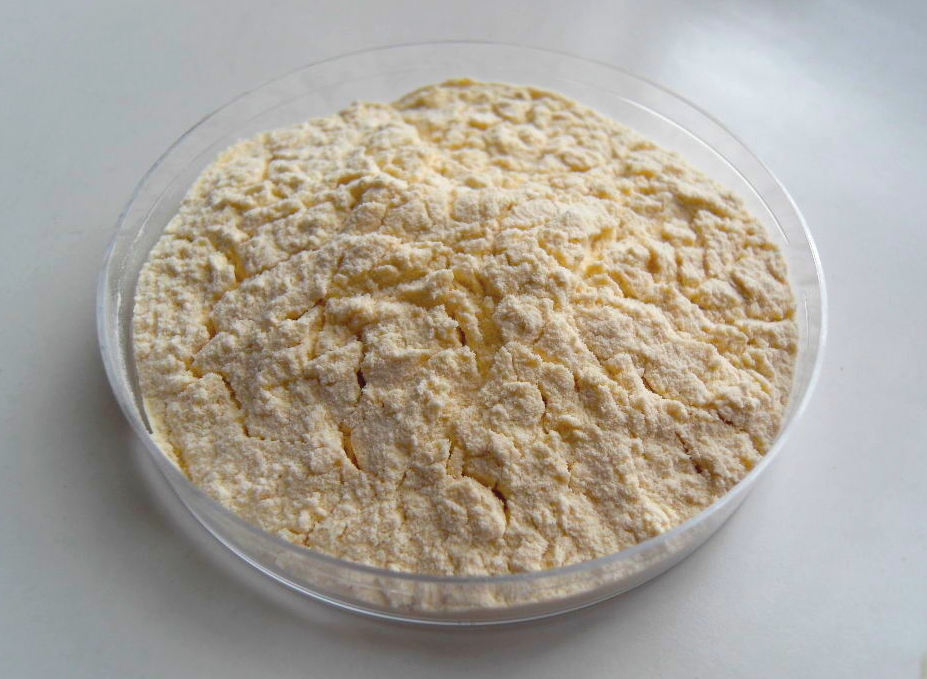
Soy Peptone
Soya Peptone is enzymatic digest of soya flour. In addition to its nitrogen content, it is rich in high quality protein, carbohydrates, calcium and B vitamins. It is a non-animal product and hence soy-based peptones are used when it is necessary to eliminate all animal derived components. Soya Peptone is a papaic digest of defatted soybean flour and is a well-balanced source of essential amino acids, carbohydrates and vitamins in cell culture.
How to make soya peptone?
The process of production of soya peptone includes four main stages: • Preparing the defatted soya flour, firstly. The soya protein hydrolysis, secondly. Purifying the product, thirdly , and then, • Drying the product, finally.
What is the function of soy peptone?
Soy Peptone is for use in preparing microbiological culture media in a laboratory setting, and is not intended for use in the diagnosis of disease or other conditions in humans. Soy peptone is a rich source of nutrients with a high carbohydrate content.
How is peptone prepared?
Peptones are partially digested protein; they are prepared by the enzymatic or acidic hydrolysis of proteinaceous material. These hydrolysates contain secondary protein derivatives such as polypeptides, dipeptides, and amino acids.
What is a substitute for peptone?
Vegetable Extract is a meat-free alternative to traditional peptones.
What is the composition of peptone powder?
They are composed mainly of inorganic salts, amino acids, vitamins, and carbohydrates. Peptones also contain some trace elements such as iron, copper, manganese, and zinc. The peptone can be used as an alternative to animal blood serum as a growth factor supplement for the cultivation of bacteria and fungi.
What are the ingredients in soya peptone?
Soya flour, the principle substrate of soya peptone, is rich in high-quality protein, carbohydrates, calcium and B vitamins. Soya peptone is an enzymatic digest of soyabean meal. In addition to its nitrogen constituents, soya peptone has high carbohydrate content and is suitable for many purposes.
Benefits:
Peptones are excellent natural sources of amino acids, peptides and proteins in growth media. Soya Peptone is the soluble end product of enzymatic digestion of soyabean meal by the enzyme papain. Soya peptone acts as a growth supplement in cell culture media where improved filterability are required.
Uses of Peptone Powder & Paste
- Used for commercial production of enzymes, vaccines, antibiotics, steroids and other products.
- Used as a nitrogen source for mammalian cell culture formulations in which it serves as supplement as well as good alternative to serum.
- It is a rich source of nitrogen with high tryptophan content supporting the growth of fastidious organisms. Used in formulation of microbiological culture media for cultivation of variety of bacteria and fungi
- It bring a reliable and consistent source of nitrogen to media.
- Used in microbiological culture media to support the nutritional requirements of microorganisms dehydrate.
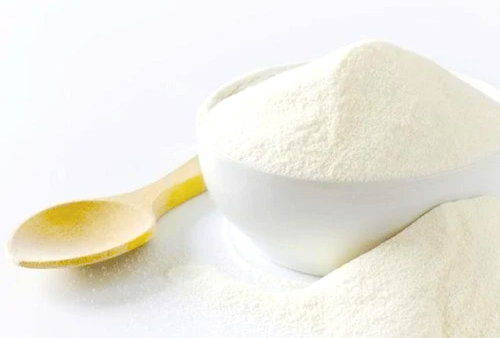
Casein Peptone
Buffered Peptone Water w/ Casein is used as a pre-enrichment medium for increasing the recovery of injured Salmonella species from food particularly cocoa, chocolate, confectionary etc. prior to selective enrichment and isolation.
What is casein peptone used for?
Casein Peptone Type I is an enzymatic hydrolysate of casein for use in preparing microbiological culture media in a laboratory setting and is not intended for use in the diagnosis of disease or other conditions in humans.
What is the peptone of casein?
Peptone from caseinenzymatic High quality source of peptides and amino acids produced by enzymatic digestion of casein. Refined hydrolysate that has been specially processed to increase solubility. Suitable as nutrient for laboratory media and industrial fermentation.
What is casein and how is it used?
Casein, the chief protein in milk and the essential ingredient of cheese. In pure form, it is an amorphous white solid, tasteless and odourless, while its commercial type is yellowish with a pleasing odour. Cow's milk contains about 3 percent casein.
How we make casein peptone?
Casein Peptones are manufactured by enzymatic hydrolysis of selected milk proteins. The enzymatic preparations traditionally used have long been based on natural active materials such as Pancreatin.
Usage
Peptone from casein is widely used in industrial microbiology as a nutrient source for the growth of microorganisms in large-scale fermentation processes. Peptone from casein, also known as tryptone or peptic casein peptone, is a water-soluble protein hydrolysate obtained from the pancreatic digestion of casein and used as a nutrient source in microbial culture media. It provides a wide range of nutrients, including amino acids, vitamins, minerals, and peptides, which support the growth of diverse microorganisms. It is particularly useful for the cultivation of fastidious and heterotrophic microbes that require complex nutrient sources.
Application
Peptone from casein is commonly used as an ingredient in many microbial culture media for the growth and identification of bacteria, yeasts and molds from various pharmaceutical, environmental, food and beverage samples.
Features and Benefits
Our Granulated media are:
- Safer - Significant reduction of inhalation of toxic and allergenic substances resulting in fewer allergic responses. Less contamination of working tools and environment
- Accurate - No separation of components and no clumping, even under humid or warm conditions, ensure a uniform product with higher performance accuracy
- Fast - Rapid and uniform dissolution in water
- Easier - Easier handling and weighing due to the better flow properties. Media do not stick to the flask or container
- Reliable - Homogenous distribution of ingredients guarantees high reproducibility even if only small amounts of media are used.
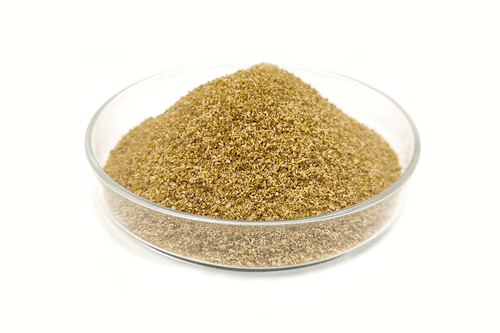
Fish Peptone
Fish peptone is non-mammalian peptone, used as a nitrogen source in microbiological culture media. It is suitable for Pharmaceutical and vaccine production to reduce TSE/BSE risks. Fish peptone is non-mammalian peptone, used as a nitrogen source in microbiological culture media.
What is fish peptone used for?
Fish peptone is one of protein hydrolysate products that can be used as nitrogen source for microbial growth. Peptone can be made from marine fish whereas protease enzyme was made from either papaya extract or commercial papain.
How is peptone produced from fish?
Fish peptone was produced using enzymatic hydrolysis of silver carp filleting by-products by alcalase and trypsin. Also, the efficiency of the hydrolysates as a nitrogen source in Staphylococcus aureus medium was compared with commercial TSB.
Why is peptone important?
In addition to amino acids, peptone also includes many other components, so it can provide carbon sources, nitrogen sources, growth factors and other nutrients for biological cultivation and fermentation.
What is peptone used as a source of?
The main components of peptone are tryptophan, lysine, arginine, histidine, methionine, and phenylalanine. All these amino acids are present in sufficient quantity in peptone so that they can be used as a source of nitrogen for the growth of the microorganism involved in the fermentation process.
Benefits
Fish peptone is non-mammalian peptone, used as a nitrogen source in microbiological culture media. It is suitable for Pharmaceutical and vaccine production to reduce TSE/BSE risks. Fish peptone is non-mammalian peptone, used as a nitrogen source in microbiological culture media.
Fish peptone is one of protein hydrolysate products that can be used as nitrogen source for microbial growth. Peptone can be made from marine fish whereas protease enzyme was made from either papaya extract or commercial papain.
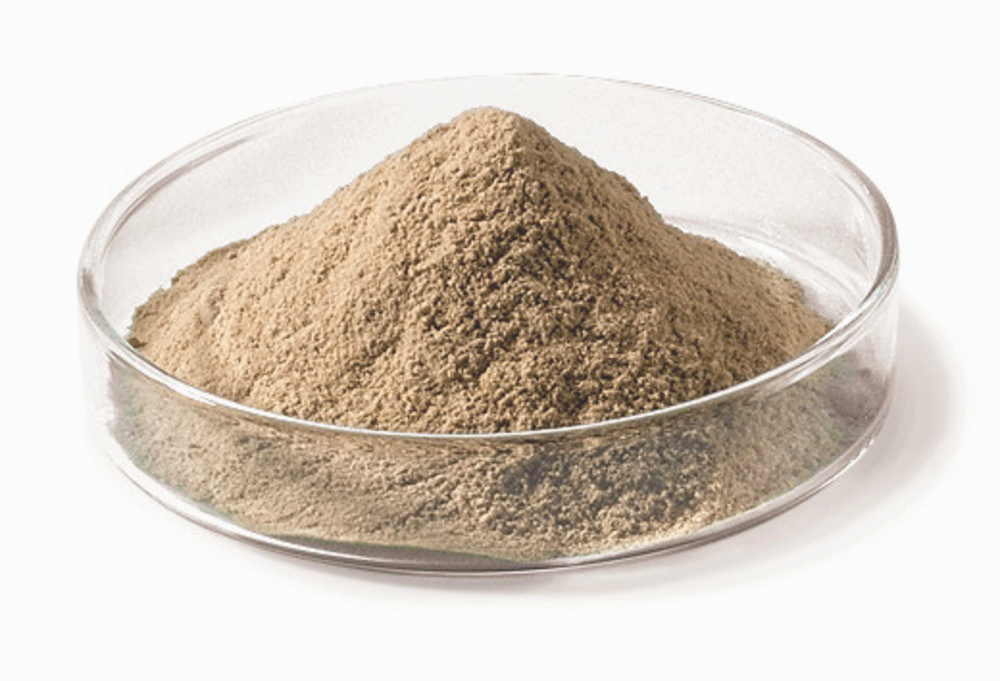
Meat Peptone
Meat Peptone is for use in preparing microbiological culture media in a laboratory setting, and is not intended for use in the diagnosis of disease or other conditions in humans. Meat Peptone is a highly nutritious enzymatic digest of meat and may be used as an ingredient in culture media.
Benefits
Meat Peptone can be utilized as a nitrogen source and growth factor in cell culture media formulations. It is also used to supplement media for culturing cells for fermentation and vaccine production. Meat Peptone is an enzymatic digest of lean meat tissue manufactured under controlled conditions. Meat Peptone is for use in preparing microbiological culture media in a laboratory setting, and is not intended for use in the diagnosis of disease or other conditions in humans. Meat Peptone is a highly nutritious enzymatic digest of meat and may be used as an ingredient in culture media. Peptone from meat is widely used in industrial microbiology as a nutrient source for the growth of microorganisms in large-scale fermentation processes. Peptone from meat, also known as peptic meat peptone, is a water-soluble protein hydrolysate obtained from the pancreatic digestion of meat and used as a nutrient source in microbial culture media. It provides a wide range of nutrients, including amino acids, vitamins, minerals, and peptides, which support the growth of diverse microorganisms. It is particularly useful for the cultivation of fastidious and heterotrophic microbes that require complex nutrient sources.
What is the purpose of peptone?
Peptone water is used as a diluent and nutrient enrichment broth for the resuscitation and growth of a wide variety of microorganisms, including Cronobacter, Enterobacteriaceae, Escherichia coli and Salmonella, in all food and feed products and water samples.
What are the nutrients in peptone?
Peptones are water-soluble protein hydrolysates, containing peptides, amino acids, and inorganic salts as well as other compounds, such as lipids, vitamins, and sugars.
What is peptone in protein?
Peptones are protein hydrolysates formed by enzymatic or acidic digestion of various raw materials and many complex media contain peptones as the source of nitrogen.
What is peptone in protein?
Peptones are protein hydrolysates formed by enzymatic or acidic digestion of various raw materials and many complex media contain peptones as the source of nitrogen.
What are the sources of peptone?
Peptone is primarily obtained from bovine or porcine origin, such as meat, internal organs, gelatin, and milk, as well as from plants and yeasts [1]. Peptone is a partially digested protein, and prepared by the enzymatic or acidic hydrolysis of proteinaceous material.
Application
Peptone from meat is commonly used as an ingredient in many microbial culture media for the growth and identification of bacteria, yeasts and molds from various pharmaceutical, environmental, and food and beverage samples. The high sulphur content makes meat peptone suitable for the detection of bacteria producing hydrogen sulfide.
Features and Benefits
Our Granulated media are:
- Safer - Significant reduction of inhalation of toxic and allergenic substances resulting in fewer allergic responses. Less contamination of working tools and environment
- Accurate - No separation of components and no clumping, even under humid or warm conditions, ensure a uniform product with higher performance accuracy
- Fast - Rapid and uniform dissolution in water
- Easier - Easier handling and weighing due to the better flow properties. Media do not stick to the flask or container
- Reliable - Homogenous distribution of ingredients guarantees high reproducibility even if only small amounts of media are used.
Extracts
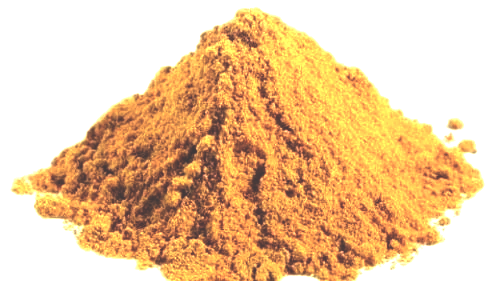
Liver Extract
Liver extract is a product that comes from animal liver, most commonly from cattle. Liver extract is used to make medicine. Liver extract is used for improving liver function, treating chronic liver diseases, preventing liver damage, and regenerating liver tissue. Liver extract contains vitamin B12, folic acid, and iron. In animals, it seems to increase the number of liver cells. Liver extracts were obtained by homogenizing tissues with a solution containing trichloroacetic acid/acetone, leading to precipitation of macromolecules, and protein samples were then obtained by centrifugation yielding materials which were dissolved in an appropriate buffer and used for 2D gel analysis [167]. Liver extract, a solution made from animal livers, was once a go-to treatment for a variety of health problems. The extract is high in many vitamins, especially B-12. Vitamin B-12 is responsible for keeping nerves and blood cells healthy and for making DNA. Liver extract is also a rich source of iron and folic acid.
How is liver extract made?
Liver extracts were obtained by homogenizing tissues with a solution containing trichloroacetic acid/acetone, leading to precipitation of macromolecules, and protein samples were then obtained by centrifugation yielding materials which were dissolved in an appropriate buffer and used for 2D gel analysis.
Benefits:
Liver extract is a product that comes from animal liver, most commonly from cattle. Liver extract is used to make medicine. Liver extract is used for improving liver function, treating chronic liver diseases, preventing liver damage, and regenerating liver tissue.
Is liver extract good for the liver?
Early research suggests that injecting liver extract plus flavin adenine dinucleotide intravenously (by IV) or as a shot into the muscle might improve response to interferon-alpha or interferon-beta therapy in people with hepatitis C. Improving liver function. Preventing liver damage. Treating liver diseases.
What is the best liver supplement for fatty liver?
Some of the best supplements for high liver enzymes include milk thistle, N-acetyl cysteine (NAC), and vitamin E. These supplements have been shown to improve liver function and reduce liver enzyme levels.
How much iron is in liver extract?
Bovine liver extracts provide the most absorbable form of iron—heme iron—as well as other nutrients critical in building blood, including vitamin B12 and folic acid. Liver extracts can contain as much as 3–4 mg of heme iron per gram.
Is liver a good supplement?
Not only do beef liver supplements help provide essential vitamins and minerals, but they also contain essential amino acids needed for a healthy functioning body. Beef liver supplements can help support cardiovascular health, boost energy levels and even detoxify the body by aiding in the removal of harmful toxins.
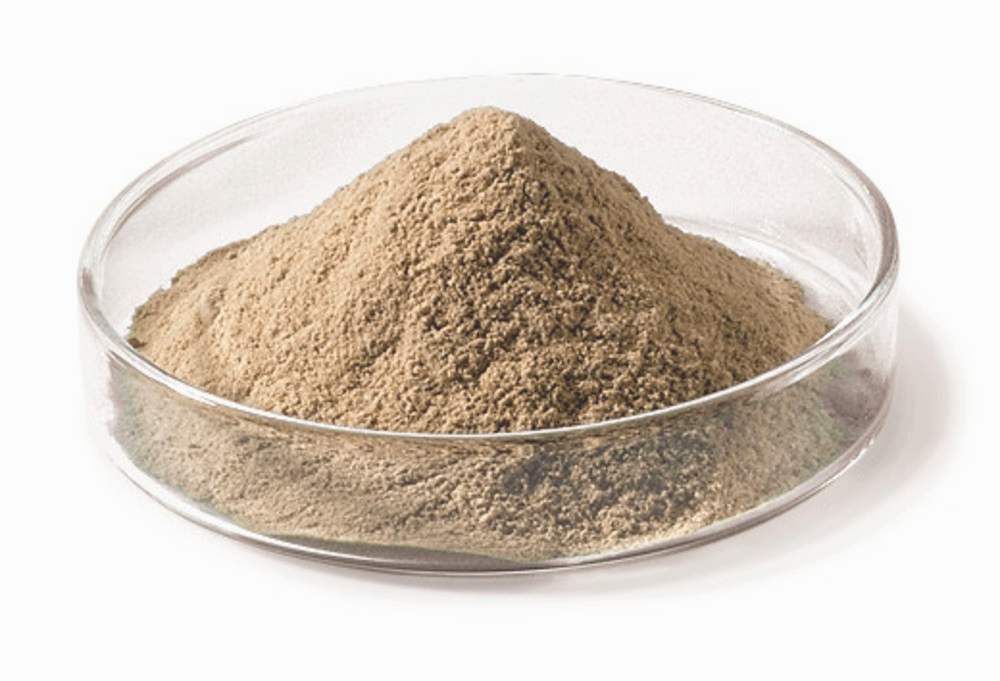
Meat Extract
Meat extract is highly concentrated meat stock, usually made from beef or chicken. It is used to add meat flavor in cooking, and to make broth for soups and other liquid-based foods. Meat extract was invented by Baron Justus von Liebig, a German 19th-century organic chemist. Beef is one of the most popular types of meat. It's exceptionally rich in high-quality protein, vitamins, and minerals. Therefore, it may improve muscle growth and maintenance, as well as exercise performance. As a rich source of iron, it may also cut your risk of anemia
What is meat extract used for?
Uses for Meat Extract. Meat extract is a common flavoring additive for soups, stews, sauces, casseroles, canned meat items, pot pies, bouillon and bouillon cubes, gravies, and other items where meat flavoring improves the products. The flavor of meat extract makes it a desirable additive to a variety of products.
What is the source of meat extract?
Meat extract is manufactured from meat with low fat content and can be considered as complementing the nutritive properties of peptone by contributing minerals, phosphates, energy sources and those essential factors missing from peptone. Meat extract powder is a source of amino acids, peptides and other nutrients
How does meat benefit the body?
Meats such as chicken, pork, lamb and beef are all rich in protein. Red meat provides us with iron, zinc and B vitamins. Meat is one of the main sources of vitamin B12 in the diet. Food hygiene is important when storing, preparing and cooking meat.
Health Benefits
Beef is a good source of protein and other nutrients, but is also high in cholesterol and saturated fats that can cause fatty deposits to build up in the blood. Beef can be a healthy part of your diet, but should be eaten in moderation. According to experts from Harvard University, "an accumulated body of evidence shows a clear link between high intake of red and processed meats and a higher risk for heart disease, cancer, diabetes, and premature death." Eating beef does increase your health risks overall. However, there are some benefits to eating beef if you eat it in small portions and choose lean cuts.
Blood health
Beef is an excellent source of iron. The iron in beef helps your body produce hemoglobin, a protein that helps your blood carry oxygen from your lungs to the rest of your body. Not consuming enough iron can put you at risk of iron deficiency anemia, meaning your body isn’t getting enough oxygen. You might feel tired, listless, weak, and mentally foggy.
Muscle function
Protein is essential for muscle health. It rebuilds the muscle tissue that is naturally lost in the wear and tear of daily life. Protein also helps you build more muscle and is especially helpful if you’re working on strength training. A single serving of beef supplies the recommended daily amount of protein, helping to prevent lost muscle mass. Losing muscle mass can make you feel weaker and may make it difficult to keep your balance, especially if you’re age 55 or older.
Nutrition
Nutrients per Serving
The nutritional profile of beef changes a bit depending on how you cook it. On average, though, one four-ounce serving of beef contains:
- Calories: 265
- Protein: 21 grams
- Fat: 19 grams
- Carbohydrates: 0 grams
- Fiber: 0 grams
- Sugar: 0 grams
A serving of beef also gives you 12% of the recommended daily dose of iron, as well as the following vitamins and minerals:
- Phosphorus
- Vitamin B3
- Vitamin B6
- Vitamin B12
- Zinc
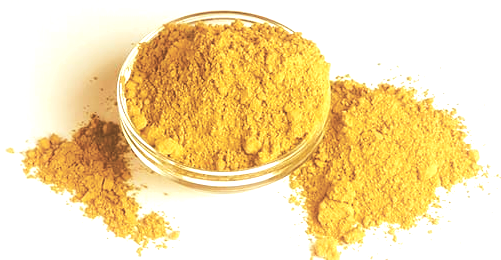
Bile Extract Powder
Bile Extract Powder is used to emulsify lipids in food passing through the intestine to enable fat digestion and absorption through the intestinal wall. Bile salts aid in the breakdown of saturated fats that the digestive system has not been able to convert into unsaturated fats. Ox bile extract powder plays a vital role in the pharmaceutical industry. Firstly, it serves as a supplement for bile acids, aiding in the digestion and absorption of fats, thereby improving gastrointestinal function.
What are the benefits of bile extract?
Besides encouraging weight loss, bile acids also affect energy metabolism, regulate blood sugar, and impact intestinal bacteria. Bile acid solutions are largely used in breaking down the cells, and in many countries, it is used to change the appearance of those who want to slim down neck and chin fat.
Is it safe to take bile supplements?
Other digestive problems that may be caused by bile salts supplements include constipation, vomiting and stomach pain. Taking too much bile salt supplements can also lead to inflammation of the colon and skin, and it may even cause conditions like pruritus and erythema
What is best bile used for?
Ursodeoxycholic acid, also known as ursodiol, is one of the acids found in bear bile that is truly medically effective for treating certain liver diseases and gallstones. It has been produced synthetically since the 1950s and is manufactured by major pharmaceutical companies
Is bile good for your stomach?
Bile helps with digestion. It breaks down fats into fatty acids, which can be taken into the body by the digestive tract. Bile contains: Mostly cholesterol.
Is bile good for liver?
Bile acids and their metabolites help maintain the homeostasis of glucose, cholesterol and triglycerides in the liver and regulate inflammation; this is considered a potential therapeutic target for NAFLD
Does bile remove fat?
The gallbladder stores and concentrates bile from the liver. The bile is then released into the first section of the small intestine (the duodenum), where it helps your body to break down and absorb fats from food
What supplement is good for bile?
Ox bile supplements can be particularly beneficial for people who have had their gallbladder removed, as they may not be producing enough bile to digest fats properly. They can also be helpful for people with conditions that affect the liver or bile ducts, such as liver disease or gallstones.
The bile has four main functions:
- Aids in the digestion of fat via fat emulsification.
- Absorption of fat and fat-soluble vitamins.
- Excretion of bilirubin and excess cholesterol.
- Provides an alkaline fluid in the duodenum to neutralize the acidic pH of the chyme that comes from the stomach.
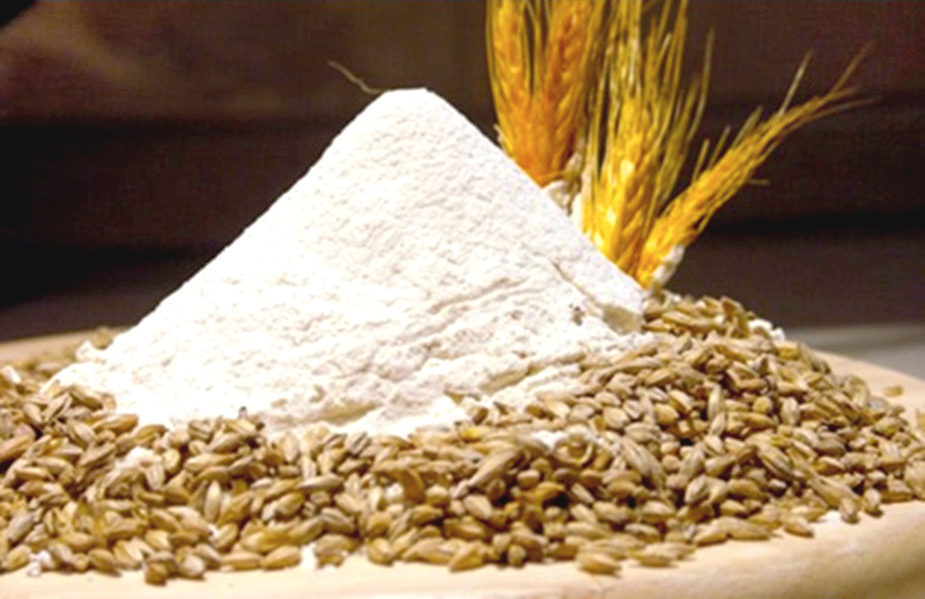
Malt Extract
Malt is a cereal grain that has been made to germinate by soaking in water and is then halted from germinating further by drying with hot air, a process known as "malting". Malted grain is used to make beer, whisky, malted milk, malt vinegar, confections such as Maltesers and Whoppers, flavored drinks such as Horlicks, Ovaltine, and Milo, and some baked goods, such as malt loaf, bagels, and Rich Tea biscuits. Malted grain that has been ground into a coarse meal is known as "sweet meal".
Malting grain develops the enzymes (α-amylase, β-amylase) required for modifying the grains' starches into various types of sugar, including monosaccharide glucose, disaccharide maltose, trisaccharide maltotriose, and higher sugars called maltodextrines. It also develops other enzymes, such as proteases, that break down the proteins in the grain into forms that can be used by yeast. The point at which the malting process is stopped affects the starch-to-enzyme ratio, and partly converted starch becomes fermentable sugars. Malt also contains small amounts of other sugars, such as sucrose and fructose, which are not products of starch modification, but which are already in the grain. Further conversion to fermentable sugars is achieved during the mashing process. Malt Extracts can be made from any type of malted grain. However, similar to the term “malt”, the term “malt extract” unqualified refers to an extract of malted barley. According to CFR, an extract of 100% malted barley can also be referred to as malt syrup
What is malt extract used for?
The next most important use of malt is to make distilled alcohol for whiskey and other beverages. Malt extracts are also used for flavour, enzyme activity, and starch content in such food products as flour, malt vinegar, breakfast cereals, baby foods, confections, and baked goods.
Benefits:
Malt extract is shown to reduce the risk of heart problems by helping to lower cholesterol. A heart-healthy mix, malt contains fiber, potassium, folate, and vitamin B6, which together lower cholesterol and decrease the risk of cardiac disease.
Nutrient-Dense
Dietician Jillian Greaves, MPH, RD, LDN, says malt contains essential vitamins, minerals, amino acids and dietary silicon that support bone health. According to a study published in the Journal of Food Science and Technology, the processing of malt improves the nutritional quality of pearl millet, which has more fiber and protein content and reduced total fat composition.
Improves Digestive Health
As per a study published in the US National Library of Medicine, malt extract supports the growth of probiotic cultures that aid good bacteria in the gut. The bacteria improves your immune function, regulates your cholesterol levels and enhances nutrient absorption.
Improves Heart Health
Malt also improves heart health by regulating your cholesterol levels. A study which involved the feeding of rats with malted barley showed that the lab subjects had lower levels of bad LDL and VLDL cholesterol compared to wheat bran. Other research suggested that barley can even reduce belly fat, body mass index and waist circumference, but more research is needed to confirm all of these.
Stimulates Better Mood
A study published in Scientific Reports found that malt stimulates good mood and improves mental health due to its hordenine component. The compound is found in barley which generates mood-elevating effects, especially when consumed through beer. Hordenine activates a specific dopamine receptor in the brain that promotes better mood.
Reduces Antinutrients
The process of malting also increases the digestibility of cereal grains. This process reduces antinutrient content which is responsible for slower digestion and nutrient absorption. As per a study published in the Journal of Food Research, a combination of malting and fermentation was found to be an effective treatment for sorghum and pearl millet by improving the digestibility of protein. It also minimized tannins and phytate antinutrient levels.
What is an example of a malt product?
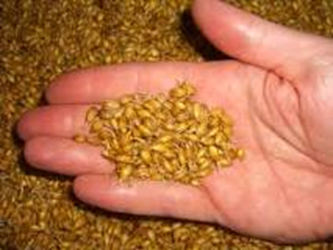
Malted grain is used to make beer, whisky, malted milk, malt vinegar, confections such as Maltesers and Whoppers, flavored drinks such as Horlicks, Ovaltine, and Milo, and some baked goods, such as malt loaf, bagels, and Rich Tea biscuits
Usage:
The most important use of malt is to make distilled alcohol for whiskey and other beverages. Malt extracts are also used for flavour, enzyme activity, and starch content in such food products as flour, malt vinegar, breakfast cereals, baby foods, confections, and baked goods.
Chelated Minerals
- Calcium Amino Acid Chelate
- Calcium Magnesium Acid Chelate
- Copper Amino Acid Chelate
- Chromium Amino Acid Chelate
- Zinc Amino Acid Chelate
- Lodium Amino Acid Chelate
- Cobalt Amino Acid Chelate
- Iron Amino Acid Chelate
- Potassium Amino Acid Chelate
- Selenium Amino Acid Chelate
- Manganese Amino Acid Chelate
- Magnesium Amino Acid Chelate
Calcium Amino Acid Chelate
Calcium Magnesium Acid Chelate
Copper Amino Acid Chelate
Chromium Amino Acid Chelate
Zinc Amino Acid Chelate
Lodium Amino Acid Chelate
Cobalt Amino Acid Chelate
Iron Amino Acid Chelate
Potassium Amino Acid Chelate
Selenium Amino Acid Chelate
Manganese Amino Acid Chelate
Magnesium Amino Acid Chelate
Tablet/Syrup/Capsules
Cerebroprotein Hydrolysate
Brewer's Yeast
Iron Protein Succinylate
Hepatohydrolysate
Ingredients
- Cosmetic Ingredients
- Sports Nutrition Ingredients
- Joint Care Ingredients
- Food Ingredients
- Animal Nutrition Ingredients
Cosmetic Ingredients
Sports Nutrition Ingredients
Joint Care Ingredients
Food Ingredients
Animal Nutrition Ingredients
Food Emulsifier
- Distilled Monoglyceride (DMG)
- Glyceryl Monotearate (GMS)
- Glycerol Monolaurate (GML)
- Polyglycerol Esters of Fatty Acids of Fatty Acids (PGE)
- Calcium Sterate
- Sorbitan Monostearate (SMS)
- Magnesium Stearate
- Potassium Stearate
